North American Dragon Class
The World's most popular One Design Keelboat

History of the Dragon Class

A design competition was launched in 1928 by the Royal Gothenburg Yacht Club (GKSS) in Sweden for an affordable cruising keelboat that was “relatively fast, externally attractive and seaworthy”. Johan Anker, already an eminent yacht designer and winner that year of an Olympic Gold Medal in the 6-meter class, was the winner and his one-design entry, based on the 20 square-meter rule, was approved that year by the Royal Gothenburg Yacht Club, the Royal Danish Yacht Club and the Royal Norwegian Yacht Club. The first Dragon was built in 1929 and they quickly became popular in most nearby countries. International competition began with the donation by the Clyde Yacht Club Conference of the Dragon Gold Cup in 1937.
The Dragon was the Olympic one-design three-person keelboat class from 1948 to 1972, which saw upgrades for racing with the addition of a genoa and spinnaker, with supporting rigging changes. In 1961 the IDA was formed to formally manage the evolution and consistency of the boat. This era ushered in the biggest expansion of the Dragon Class worldwide with individual Dragons or Dragon fleets on almost all continents.
After the Dragon was dropped from the Olympics, there was a lot of discussion about the way forward. Up until this time, Dragons were built of carvel planked wood, but fiberglass was the newest technology and the IDA, working with Børresen in Denmark, developed plans for a fiberglass Dragon that would maintain the competitiveness of the wooden Dragons. Despite this important evolution, the Dragon Class died out or was seriously reduced in numbers in many countries once it was no longer an Olympic Class.
Modern Dragons
After the Olympic period the Dragon subtly altered its profile to become the keel boat of choice for ex Olympic contenders and champions as well as other talented sailors looking for strong competition in a non-Olympic Class. In the mid-eighties the Class started to grow once more with the emergence of a second major builder, Petticrows under the leadership of Poul Ricard Høj- Jensen, alongside Børresens. By the mid 1990s the average number of boats built each year was 25-30 and the major competitions regularly had 80 – 100 boats. Even with today’s significantly expanded race program, most of the major competitions have 80+ boats.
The Dragon Class is active in 30 countries in 5 Continents with over 1300 registered boats, and many more used for day sailing or cruising. The World Championships are held in odd years and the European Championships are held annually. The Gold Cup (held annually in certain specified European countries), is unique in that all six races count without discard.
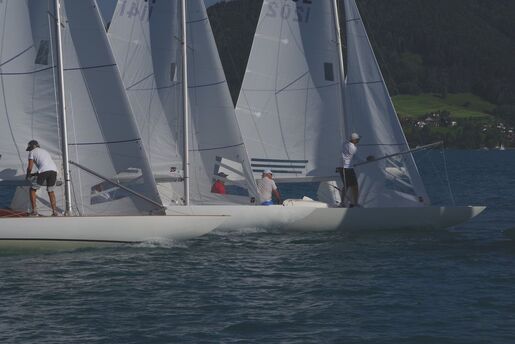
The crew of three or four makes for a tightly knit unit without the need for hired heavyweights. Class Rules ensure level racing, and the ease of trailing makes international competition attractive to all budgets. Spars and sails are easily adjustable while racing, allowing a skillful crew to optimize the boat for any conditions. Dragon races cannot be won by brute strength. The Dragon’s design philosophy has made it a class where extremely close racing is the norm, and where races are won by the crew’s mastery of the conditions and tactics on the course.
Dragons in North America
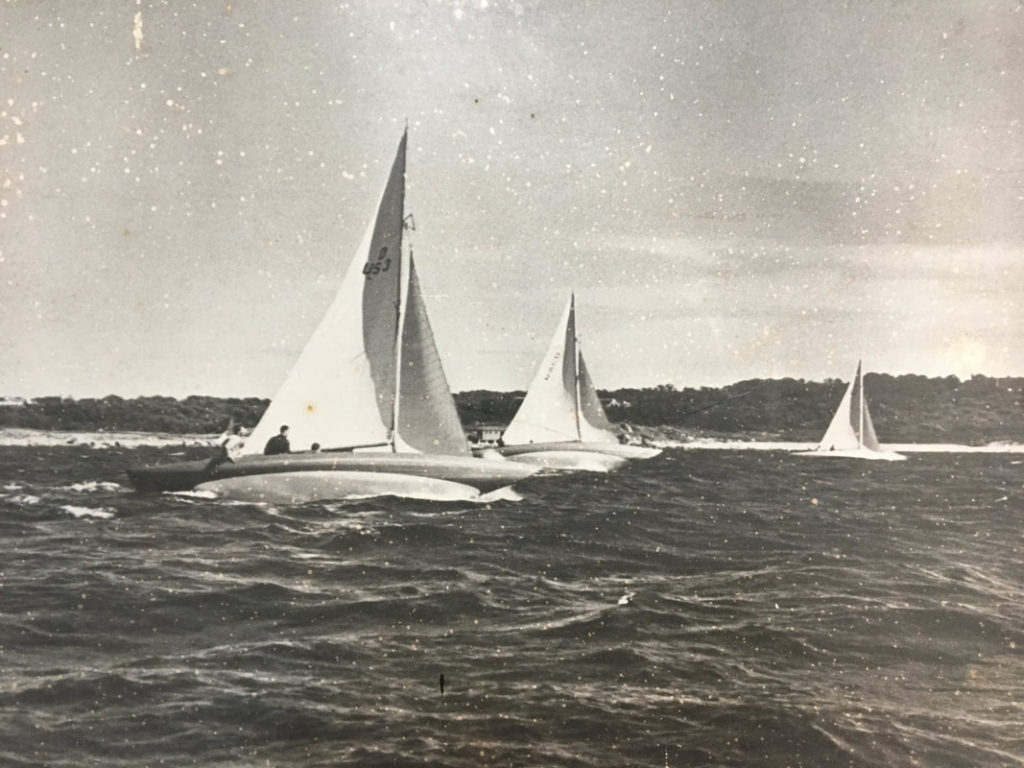
The first Canadian Dragon was launched on English Bay in Vancouver in 1951. The fleet in Canada was given a boost by H.R.H. Prince Philip who presented the Canadian Yatching Association with the Duke of Edinburgh Trophy, first won in 1953 by Spence Hanna of the RCYC in Toronto. In 1954 H.R.H. Prince Philip brought his Dragon, Bluebottle (a wedding present from the Island Sailing Club of Cowes) to Canada where it was raced in Montreal, Hamilton and Toronto against local Dragon sailors from Canada and the US. In the US, the first fleets were started in the early 50s in the North East, the South, the Pacific North West and California. Many were Norwegian or UK built.
At the height of it’s popularity as a racing class in the United States, American sailors were among the best in the world, with Lowell North winning a Bronze at the Tokyo Olympics in 1964, and New Orleans native G.S. (Buddy) Friedrichs II winning Gold at the Olympics in Acapulco, Mexico in 1968. In the final Olympic Competition for the Dragon class, in Kiel, Germany in 1972, Don Cohan of Philadelphia took home the Olympic Bronze medal.
The class has active racing fleets in the Great Lakes and the Pacific Northwest. There are individual Dragons racing or day sailing in California, the Midwest, the Northeast, and along the Gulf Coast. For 70 years Dragons have been sailing our shores, and the same qualities of design and performance that attracted people to her then continue to do so now. The same beautiful lines drawn by Johan Anker in 1928 still appeal to our love of beauty, and exciting performance on the water.

The Dragon Class Archive
Over 90 Years of History at your Fingertips
Explore the Dragon Class Builders.
Over 300 boatbuilders have tried their hand at the Dragon, principally in its earlier, wooden, days. Some only built one Dragon but several built 100s and many built dozens. The class owes a particular debt to Borge Børresen, who managed the construction transition from wood to GRP immaculately so that both constructions competed, and still do, on equal terms. Other builders who were particularly successful internationally with wooden boats include Anker & Jensen, Pedersen & Thuesen, Abeking & Rasmussen, Bjarne Aas and Savell. Since the introduction of GRP construction Petticrows have taken the lead from Borresen as the major builder in the class, followed by others such as Doomernik and Vejle Yacht Services. During the 1980s Peter Wilson also built a number of GRP boats in the UK. The competition among builders, sailmakers and sailors has meant that equipment has been continuously improved so that a modern Dragon is now one of the most sophisticated racing boats to be found.
Things to Explore
Dragon Class
Class contact information.
Click below
Class Email
Class Website
One-Design Class Type: Keelboat
Was this boat built to be sailed by youth or adults? Adult
Approximately how many class members do you have? 40
Photo Credit:Christopher Nordhoff
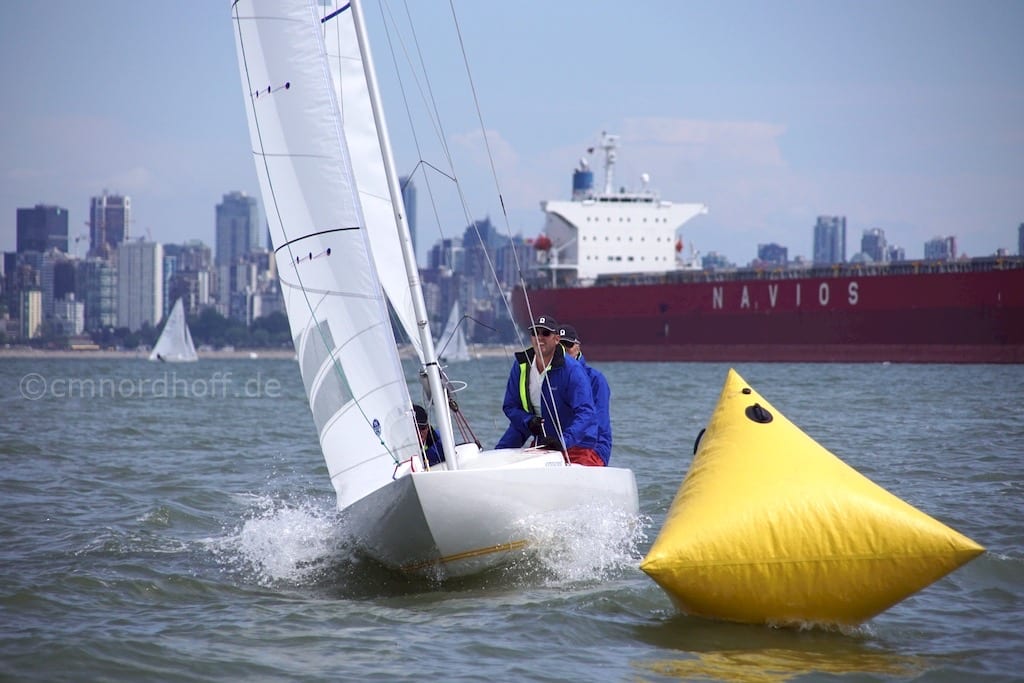
Photo Credit: Chip Riegel
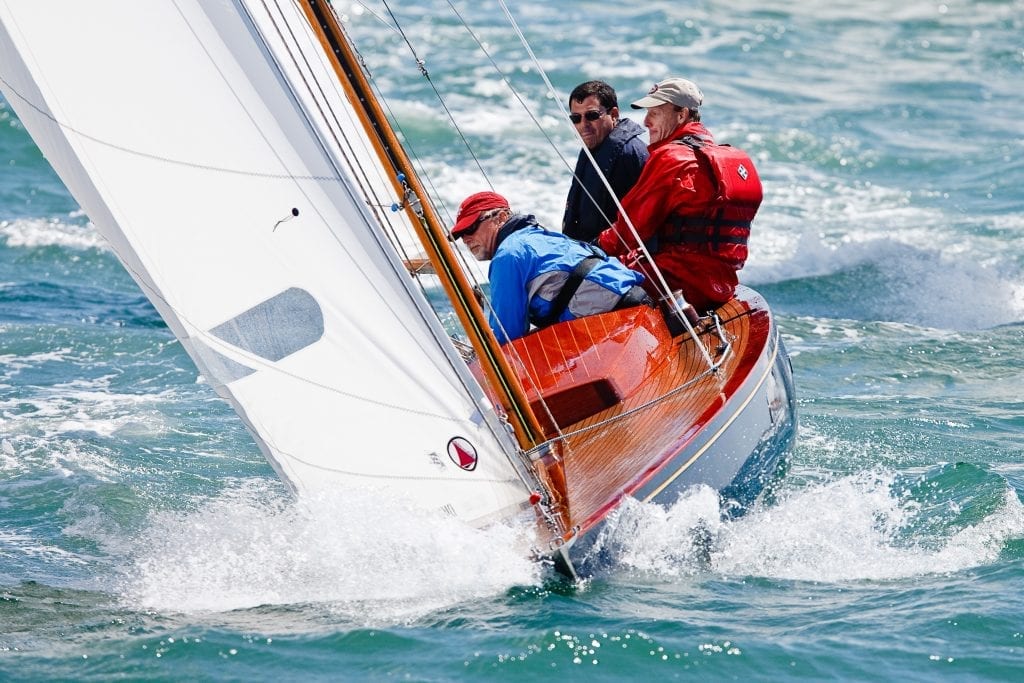
Photo Credit: Dale Northey
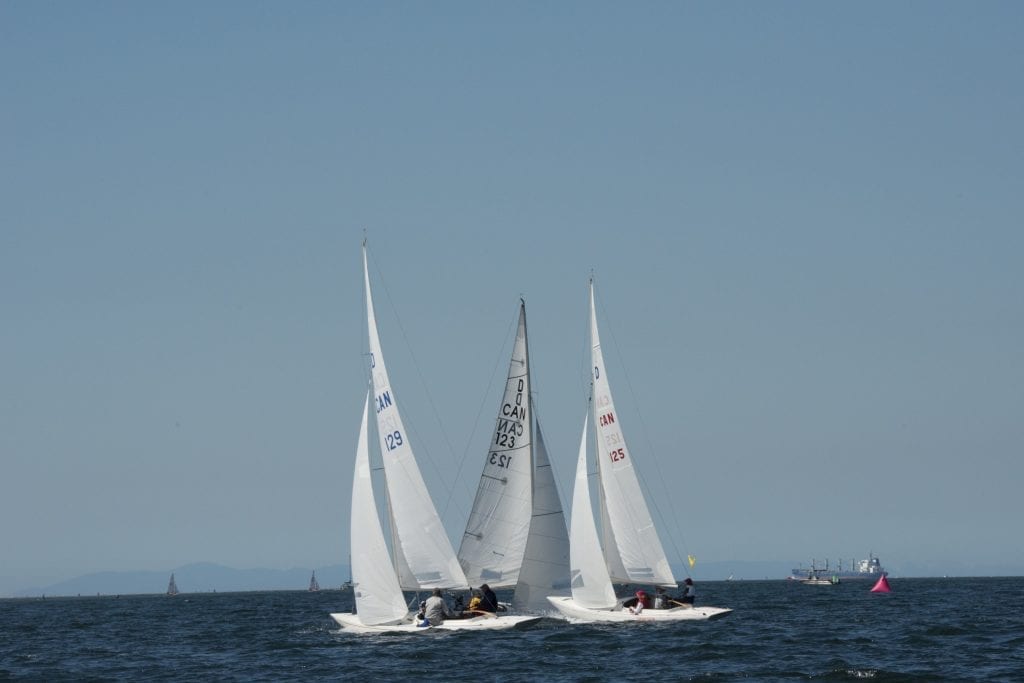
About Dragon Class
The Boat – Technically demanding, Classic lines, Modern spars and rigging The People – Raced by a range of ages and genders – crew of 3 or 4 within weight limits, Great social events The Class – Active in 30 countries, 5 continents, with 1420 registered boats, Racing at local, national and world levels, Classic and Corinthian trophies, Active racing fleets in NA on the West Coast, Great Lakes
IDA Yearbook 2020/2021: http://bit.ly/35Gtiwm
Boats Produced: 1500
Class boat builder(s):
BB Sailing I/S, Denmark Doomernik Dragons, Netherlands Petticrows Ltd, UK Pinnacle Yachts / Ridgeway Dragons, Australia Premier Composite Technologies LLC, United Arab Emirates Vejle Yacht Services APS / Royal Dragon, Denmark
Approximately how many boats are in the USA/North America? 80
Where is your One-Design class typically sailed in the USA? List regions of the country:
West Coast, North East, Great Lakes
Does this class have a spinnaker or gennaker? Yes
How many people sail as a crew including the helm? 4
Ideal combined weight of range of crew: max weight 628 lb (285 kg)
Boat Designed in 1929
Length (feet/inches): 29 feet 2 inches
Beam: 6 feet 5 inches
Weight of rigged boat without sails: 2 tons
Draft: 3 feet 10 inches
Mast Height: 35 feet (stepped to keel)
Tuning Guides Tuning Guides Tuning Guides
Class rules (pdf doc).
Back to One-Design Central
Copyright ©2018-2024 United States Sailing Association. All rights reserved. US Sailing is a 501(c)3 organization. Website designed & developed by Design Principles, Inc. -->
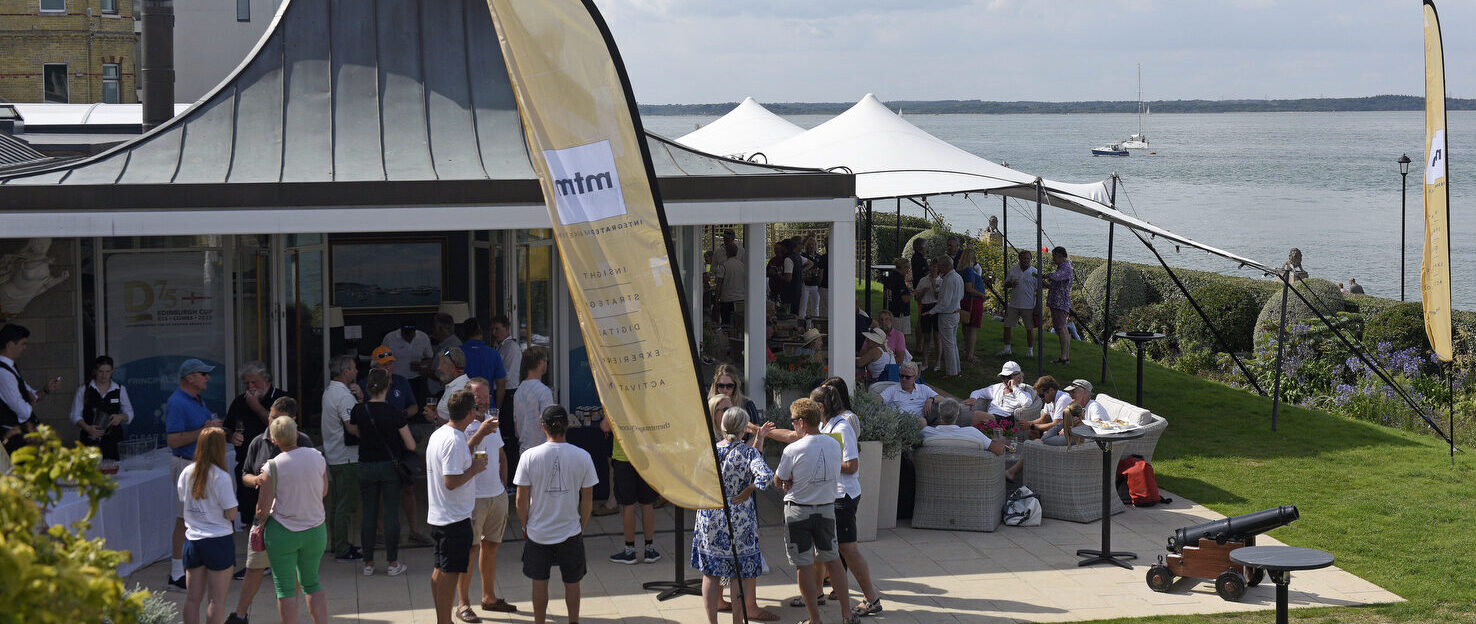
South Caernarvonshire Yacht Club to host Edinburgh Cup
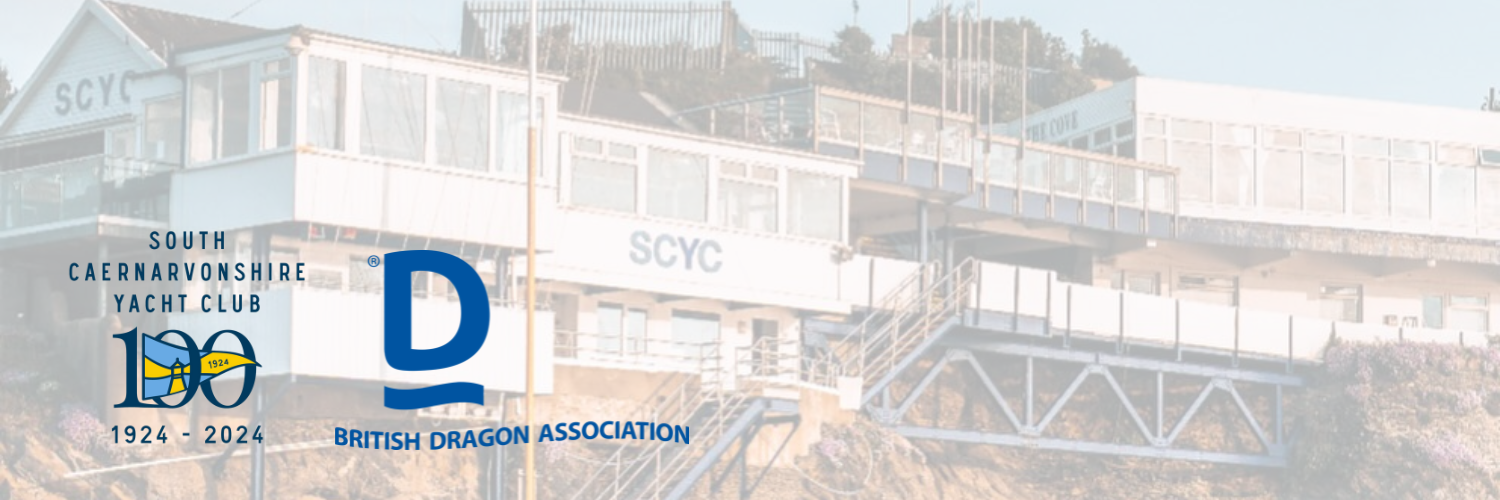
The 76 th Edinburgh Cup, the annual British Dragon nationals and Northern championship will be hosted by the South Caernarvonshire Yacht Club who is celebrating their centenary year.
The BDA Northern championships and Edinburgh Cup return to the waters of North…
THE BURNHAM DRAGON EASTER REGATTA 2024

The Royal Corinthian Yacht Club in Burnham-on-Crouch once again played host to the much-loved Burnham Dragon Easter Regatta, a highlight in the calendar for many. This year, the event saw eight Dragons participating, including three enthusiastic teams that travelled from the Medway…
Dragon Classic News February 2024
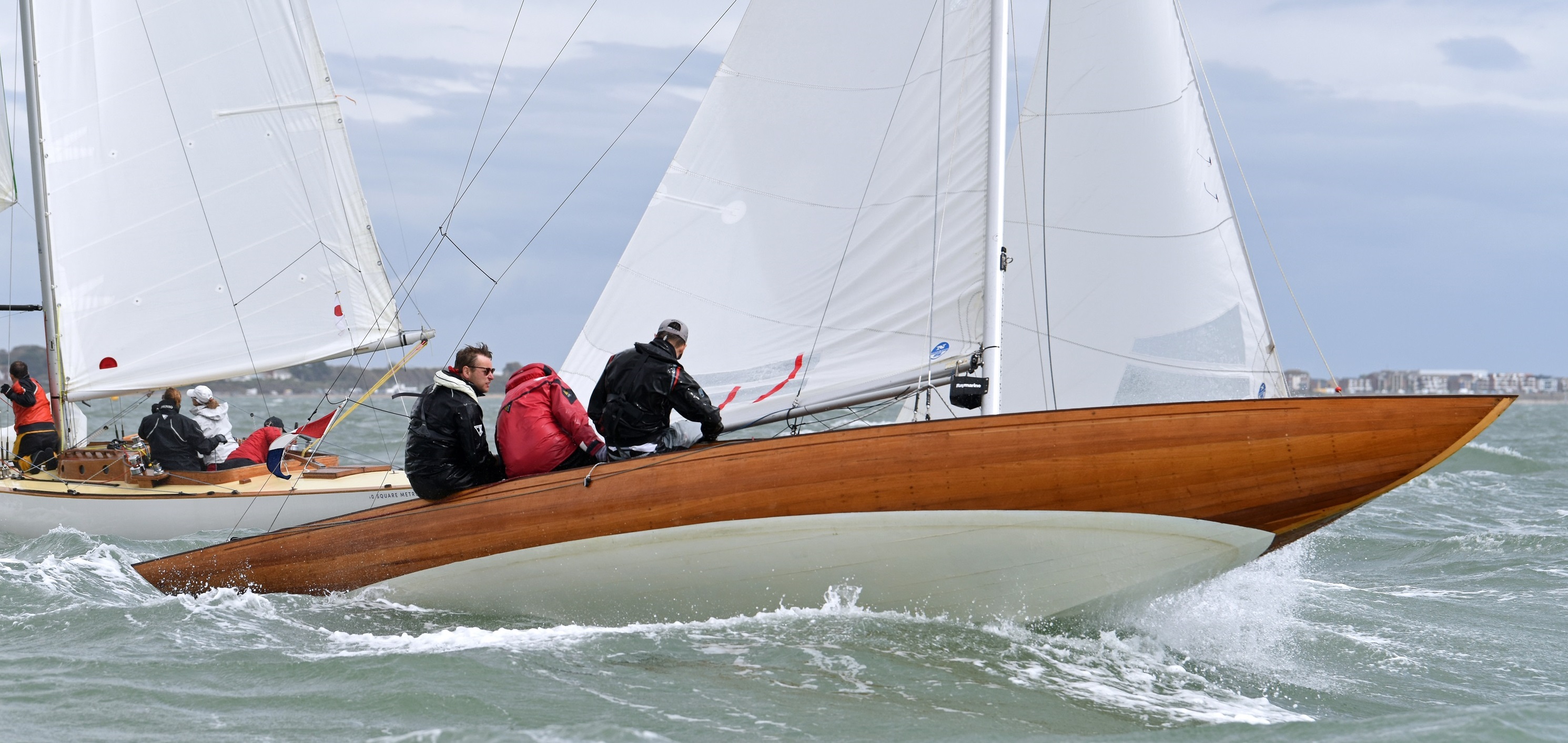
Regattas: Classics can of course sail in any Dragon event. There are some which are restricted to them and others where Classics are likely to form a significant part of the entry. In the UK, the BDA Classic Championship will be at Aldeburgh Yacht Club on…
UPCOMING DRAGON EVENTS
Keelboat endeavour 2024, bda committee meeting may 2024, bda southern championship, bda classic & vintage championships, bda northern area championships, uk dragon fleets.
click each location to view the fleet
ABERSOCH ALDEBURGH BURNHAM MEDWAY SCOTLAND SOLENT
Looking for…
Come and join us on the water.
- +351 219 233 147
- [email protected]
Dragon Class
History of the dragon, the first dragon.
In 1928, a design competition was launched by the Royal Gothenburg Yacht Club in Sweden for an affordable cruising keelboat that was “relatively fast, externally attractive and seaworthy.” Johan Anker (1871-1940), already an eminent yacht designer and winner of an Olympic Gold Medal in the 6-meter class, won the competition with his one-design entry based on the 20 square-meter rule. The name of the design was, of course , the Dragon and the first was built in 1929. The dimensions were, and remain, LOA 8.9m, LWL 5.7m, beam 2.0m and draught 1.2m with a total overall weight of 1,700 kg. The Dragon quickly became popular in many nearby countries. International competition began with the donation of the Dragon Gold Cup by the Clyde Yacht Club Conference in 1937.
Olympic Era
After many yacht classes disappeared during World War II, Peter Lunde, one of Norway’s top Dragon sailors, traveled to London in 1946 with the goal of promoting new international regatta classes. He brought with him the Anker family’s permission to use their drawings internationally, as long as they were approved by the International Yacht Racing Union (now known as World Sailing). The Dragon was awarded Olympic status that year. It remained the Olympic one-design three-person keelboat class from 1948 to 1972, during which time it was upgraded for racing with the addition of a genoa and spinnaker, as well as supporting rigging changes. In 1961, the International Dragon Association (IDA) was formed to manage the evolution and consistency of the boat. This era saw the greatest expansion of the Dragon class worldwide, with individual Dragons or Dragon fleets on almost every continent.
Olympic Aftermath
After being dropped from the Olympics in 1972, there was much debate about the future of the Dragon class. Until that point, Dragons were built with carvel-planked wood, but fiberglass was the latest technology. The IDA, in collaboration with Børresen in Denmark, developed plans for a fiberglass Dragon that would maintain the competitiveness of the wooden Dragons. The class owes a great deal to Børresen, who managed the transition from wood to fiberglass construction expertly, ensuring that both types of boats could compete on equal terms. Despite this important development, the Dragon class declined and was significantly reduced in numbers in many countries. However, it continued to attract top sailors looking for strong competition in a non-Olympic class. In the mid-1980s, the class began to grow again with the emergence of a second major builder, Petticrows . By the mid-1990s, the average number of boats built each year was 25-30, and major competitions regularly had 80-100 boats.
Modern Days
Today, the Dragon class is active in 30 countries on five continents, with over 1,400 registered boats and many more used for day sailing or cruising. The World Championships are held in odd-numbered years, and the European Championships are held annually. The Gold Cup, held annually in certain specified European countries, is unique in that all six races count without discard.
The crew of three or four makes for a tightly knit unit without the need for hired heavyweights. Class rules ensure level racing, and the ease of trailing makes international competition accessible to all budgets. Spars and sails are easily adjustable while racing, allowing a skilled crew to optimize the boat for any conditions. Dragon races cannot be won by brute strength. The Dragon’s design philosophy has made it a class where extremely close racing is the norm, and where races are won by the crew’s mastery of the conditions and tactics on the course.
Plenty of information regarding the class, its various regattas and championships is available via the International Dragon Class Association website .

Privacy Overview

The global authority in superyachting
- NEWSLETTERS
- Yachts Home
- The Superyacht Directory
- Yacht Reports
- Brokerage News
- The largest yachts in the world
- The Register
- Yacht Advice
- Yacht Design
- 12m to 24m yachts
- Monaco Yacht Show
- Builder Directory
- Designer Directory
- Interior Design Directory
- Naval Architect Directory
- Yachts for sale home
- Motor yachts
- Sailing yachts
- Explorer yachts
- Classic yachts
- Sale Broker Directory
- Charter Home
- Yachts for Charter
- Charter Destinations
- Charter Broker Directory
- Destinations Home
- Mediterranean
- South Pacific
- Rest of the World
- Boat Life Home
- Owners' Experiences
- Interiors Suppliers
- Owners' Club
- Captains' Club
- BOAT Showcase
- Boat Presents
- Events Home
- World Superyacht Awards
- Superyacht Design Festival
- Design and Innovation Awards
- Young Designer of the Year Award
- Artistry and Craft Awards
- Explorer Yachts Summit
- Ocean Talks
- The Ocean Awards
- BOAT Connect
- Between the bays
- Golf Invitational
- Boat Pro Home
- Pricing Plan
- Superyacht Insight
- Product Features
- Premium Content
- Testimonials
- Global Order Book
- Tenders & Equipment

Year of the dragon: superyachts and sailing yachts to celebrate Chinese New Year
To celebrate the Chinese New Year (10 February) and the Year of the Wood Dragon, enjoy our roundup of yachts with nautical dragon connections and learn about the history of traditional Chinese dragon rowing boats. Finally, discover how the Dragon sailing yacht came to be named.
Fiery dragons have long been an inspiration for designers – as witnessed with the 79.9-metre superyacht Dragon , designed by Hydro Tec , the majestic 51.7-metre Dubois -designed sailing yacht Red Dragon and last (but no means least), the Bannenberg & Rowell -designed superyacht Blue Sky in Hainan in 2013. This was the first superyacht to be built by Feadship for a client in mainland China and the 44.7-metre yacht was launched in a colourful ceremony that combined Chinese and Dutch maritime cultures, with lion dancers included.
Dragon boats: their history and meaning
Dragon boats are long, narrow wooden boats with a carved dragon’s head at the bow and a tail in the stern, with a hull that is often painted with dragon scales. Paddlers compete in traditional sport racing, along with a Paradragon (para athlete) class. In sport racing there are 18 to 20 paddlers in a standard boat and eight to 10 paddlers in a smaller boat, plus a drummer and a helm – sometimes more – for festivals. Strength, endurance, skill, teamwork and harmony of purpose are all factors that come into play over courses of 200 to 2000 metres. The British Dragon Boat Association explains why the Dragon is symbolic for the Chinese people: "A classic dragon has the head of an ox; a deer's antlers; the mane of a horse; the body and scales of a snake; the claws of an eagle and the tail of a fish. With its strength and power the Dragon rides the clouds in the sky and commands the wind, mist and rain."
The history of dragon boats can be traced back over 2000 years ago, to Qu Yuan, the poet and philosopher, who committed suicide by drowning himself in the river Mi Lo to protest against political corruption. Fishermen raced to recover his body before it could be devoured by fish, beating drums to distract them. To commemorate Qu Yuan's sacrifice, Dragon boat races were organised and became part of Chinese culture, representing patriotism and group integrity.
The "Modern Era" of International Dragon Boat racing started in 1976 in Hong Kong and the International Dragon Boat Federation (IDBF) was founded in 1991. There are over 300,000 participants in Europe, from the UK to Ukraine, and 90,000 in the USA and Canada, not forgetting the nearly 50 million in China.
The International Dragon Class
Having nearly a century of history behind it – and 1,300 boats in 31 countries registered as active – this class was first conceived in 1929 in Scandinavia by Norwegian sailor Johan Anker. At the time there was a need for an inexpensive yacht, especially for younger sailors, as the economic outlook was poor in Europe. The original boat featured a cabin and bunks, but by the 1940s most Dragons were used for racing and the bunks were removed.
Enquiries to Petticrows, an established builder of Dragons (now based in Portugal), uncovered the reason this class is named the Dragon. Nicky Wilton, Dragon sailor and editor of the IDA Dragon Year Book, explained the name came about because of a clever play with words. The designer, Johan Anker, was Norwegian. Anker in English sounds like anchor. An anchor in Norwegian is drage , which is quite close to draga , which is Norwegian for a dragon beast, which leads to the English word "dragon".
In 1946 Peter Lunde, one of Norway's best Dragon sailors at the time, travelled to London with the aim of promoting international regatta Dragon classes, having sought the Anker family's permission to use Johan Anker's drawings. The Dragon was awarded Olympic status that year and the first races featured in the 1948 Olympics in Torbay. The French, in fact, chartered a Dragon from Torbay local William E. Jeffery as their boat did not pass the measurement scrutineers' attention. To no avail – Norway, Sweden and Denmark picked up Gold, Silver and Bronze medals.
By then, Dragon fever had swept the country. The same year as the Olympics, the Camper & Nicholsons -constructed Dragon Bluebottle was presented to the late Duke of Edinburgh and then Princess Elizabeth as a wedding present, paid for by the Island Sailing Club members in Cowes. One reason for the Dragon's success is said by the International Dragon Association to be its "paradoxical emphasis on tradition and renewal". Alloy spars were introduced in 1970 and GRP boats arrived in 1973, a year after the Dragon ceased to be an Olympic class.
Wood Dragons are still constructed and there is a separate Classic Dragon class for carvel-planked wooden Dragons, mostly built before 1972, and a Vintage class for GRP Dragons of over 25 years old. Sailors from all backgrounds compete, between the ages of 8 and 85 – from ex-Olympic medallists to kings, princesses and local club sailors.
More stories
Most popular, from our partners, sponsored listings.

- CLASSIFIEDS
- NEWSLETTERS
- SUBMIT NEWS

International Dragon Class Prince Philip Cup at Metung Yacht Club - Day 2
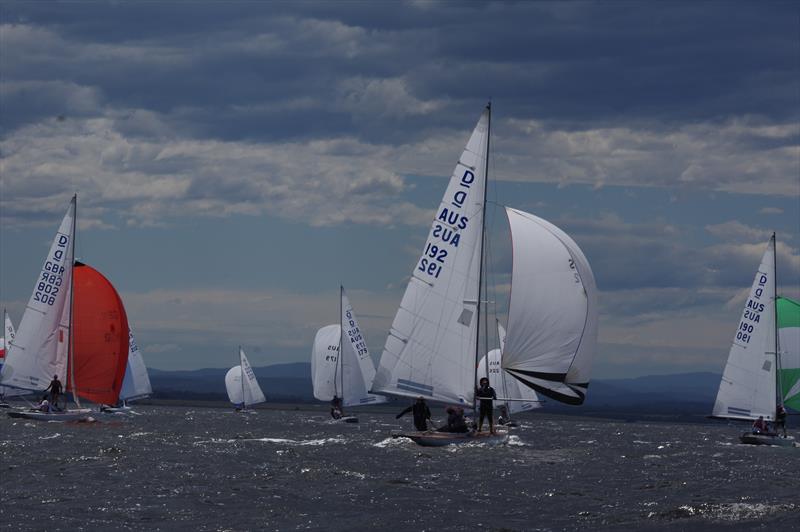
Related Articles
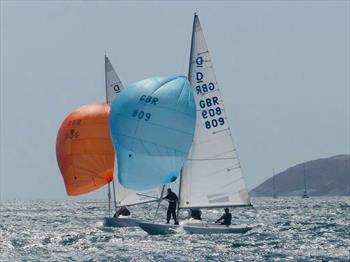

- Agriculture Equipment
- Compact Equipment
- Utility Task Vehicles
- Industrial Engines
- Recreational Marine

- Marine Commercial Top
- Product Lineup Top
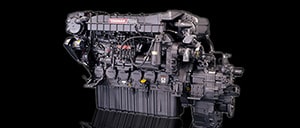
- Propulsion Engines (Medium Speed)
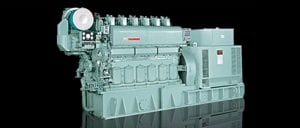
- Dual Fuel Engine
- Two-stage Turbocharging System
- Electric Propulsion System
- Net Cleaning Robot
- Production System
- Fundamental Research / Product Development
- Life Cycle Value
- Testimonials
- Energy Systems
- Compact Power Products
- YANMAR RePower
- Genuine Parts Top
- Genuine Fluids
- Maintenance Kits
- Why Use Genuine Parts
- Dealer Locator
- Careers Top
- Why Join YANMAR
- Yanmar Academy
- Merchandise
- Message from the President
- Our Mission
- Business Areas
- Company Profile
- CSR / Environment
- Financial Results
News Release
Yanmar presents the dragon sailing gold cup 2022.
August 10, 2022 YANMAR HOLDINGS CO., LTD.

Oostende, Belgium (August 10, 2022) - Yanmar has announced that it will continue its partnership with Dragon Class sailing as the Title Partner of the upcoming YANMAR Dragon Gold Cup, one of the premiere events of the International Sailing Season. The International Dragon Class has a distinguished history that dates back to the first designs crafted in Norway in 1928 and is one of the most prestigious and exciting keel boat competitions in competitive yachting. The Gold Cup will be held August 20 – 26 in Oostende, Belgium.
The pinnacle of the Dragon Class racing calendar, the Gold Cup was cancelled in 2020 due to the COVID-19 pandemic and was resumed in 2021 with Yanmar as Title Sponsor. Yanmar’s commitment to continue as Title Sponsor highlights its close relationship to the sea and commitment to delivering exciting and fulfilling experiences. “Yanmar is excited to once again partner with such a prestigious event with a long and illustrious history,” said Tsutomu Murayama, head of the Sports Business Office of YANMAR HOLDINGS Co., Ltd. “Through this support, Yanmar shows its commitment to creating value and prosperity and sharing the joy and delight of the sea in a life filled with rich and fulfilling experiences.”
The Gold Cup dates to 1937 when it was presented to the class by the Clyde Yacht Club Association. It quickly became one of the principal championships in the class and a prestigious trophy in the world of competitive yachting. The 2022 event is being hosted by Royal North Sea Yacht Club Oostend, the home yacht club of the Belgian Dragon Association. “We are very pleased to continue our association with Yanmar,” said Mr. Luc Maes, Chairman of the Royal North Sea Yacht Club Ostend. “Yanmar shares our dedication to growing and supporting a lively and thriving maritime community.” With up to 40 boats expected to participate, the 2022 Gold Cup will deliver a week of thrilling competition, commencing with registration and measurement on August 20 and 21 and culminating in the Gold Cup Dinner Thursday August 23 and the Awards Ceremony on Friday August 26.
Yanmar will enter its own Dragon Class racing team, YANMAR Racing, to compete in the Cup. Headed by America’s Cup veteran and 4-time World Match Racing Tour Champion, Peter Gilmour, the 3-person team is rounded out by Sam Gilmour, a talented and highly-rated sailor who already has impressive results on the World Match Racing Tour and Yasuhiro Yaji, a sailor with a depth of match racing experience few can equal.
Yanmar has a history of working on the ocean, providing technology and solutions to support marine lifestyles through its experience and innovation, accrued over more than a century of business. With its desire to share in the joy and delight of the sea with people all over the world through marine sports, Yanmar seeks to deepen its understanding of recreational marine activities through its association with the Dragon Class, in pursuit of the company’s Brand Statement: A SUSTAINABLE FUTURE.
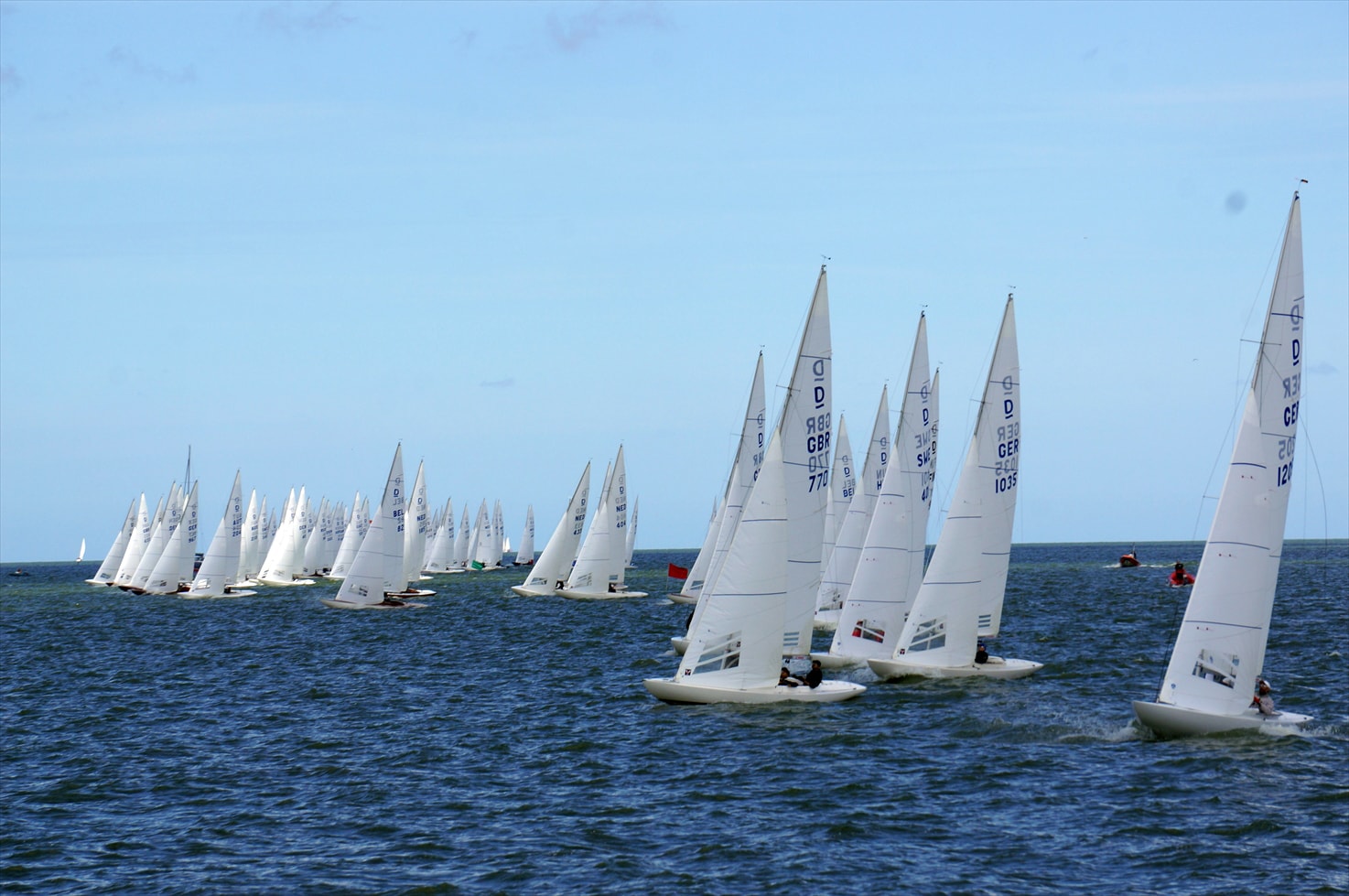
About Yanmar
With beginnings in Osaka, Japan, in 1912, Yanmar was the first ever to succeed in making a compact diesel engine of a practical size in 1933. A pioneer in diesel engine technology, Yanmar is a global innovator in a wide range of industrial equipment, from small and large engines, agricultural machinery and facilities, construction equipment, energy systems, marine, to machine tools, and components — Yanmar’s global business operations span seven domains. On land, at sea, and in the city, Yanmar provides advanced solutions to the challenges customers face, towards realizing A Sustainable Future. For more details, please visit the official website of Yanmar Holdings Co., Ltd. https://www.yanmar.com/global/about/sports/
Related Articles
Press release download.
- Release for download Download
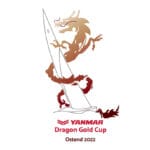
Corporate Communications, Yanmar [email protected]
- Note: Information contained in the news release is valid at the time of publication and may differ from the most recently available information.
- Important Product Information
Races and Regattas
Local racing, offshore racing, past events, class events.
- Race Management
Sail Training
Sail to change.

Forming the backbone of, and providing a major tourist attraction for Hong Kong, defined by Webster as "a fabulous animal", the dragons conjure up images of puff, fire and water. But that? dragon, with a lower case "d". Enter into the sailing world and we speak of Dragons with a capital "D"! Dragons were designed in 1929 by Johan Anker to provide an inexpensive family yacht to cruise around the Norwegian fjords, which explained why the earlier versions had two berths. Dragons quickly gained wide popularity throughout Europe and in 1948, the Dragon became an Olympic Class although she was replaced by Solings in 1974. In the modern day, Dragon sailors can be found all over the world, either racing or cruising. International Dragon racing takes place every October in Alexandria: in the Regatta Royale every September in Cannes; in February, Martinique; in April in Mallorca. Headquartered in the UK, the International Dragon Association IDA has royal connection with its President King Constantine and the Vice-President HRH Prince Henrik of Denmark. Attending any international race will almost always present an opportunity to meet some of the best sailors and personalities in the world and it is an exciting experience to be with them. There is even a rumour that Dennis Connors has bought a Dragon but this has yet to be confirmed. In Hong Kong Dragons race or sail every weekend of the year. Based currently at the Royal Hong Kong Yacht Club base at Port Shelter "Shelter Cove", our normal racing season lasts from September to May but we continue to race during the summer months. Most of the races take place on Saturday afternoon and Sunday (all day). Besides our club racing, we have two interports (invitational matches with other clubs). The Asia Pacific Interport is with the Royal Sydney Yacht Squadron, Royal Vancouver Yacht Club and Kansai Yacht Club and the European Interport is with Royal Yacht Squadron, Royal Danish Yacht Club and Cercle de la Voile d’Arcachon. The latter Interport was started by Prince Henrik of Denmark and Lowell Chang of Hong Kong. The Dragon is a One-Design, 29-foot, three-person, fixed-keel, classic-designed sloop and is made of wood or glass fibre. A suit of sails consists of a main, a genoa and a spinnaker. DRAGON FACEBOOK PAGE HK DRAGON ASSOCIATION YOUTUBE CHANNEL
ENTRY FOR CLASS SERIES RACING
It is for safety purpose that the Club employs this new entry system. Please try your best to include all your crew (including skipper) emergency contacts when entering / signing on.

Divisions Entry Form - Double Handed / Ladies Crew
SailSys homepage SailSys instruction videos New User New Entry / Boat Creation Add more boat details Give control to alternative skipper Add Crew Details Sign On
DRAGON COMMITTEE
If you are interested in learning more about the Dragon Class, please contact us any time at [email protected]
GENERAL INFORMATION
- Sailing Calendar
- Series Results
- Crew Available
- Marine Presentation for Class Boats
- Dragon International Website
NOTICES OF RACE 2023-2024
All notices of race are in PDF format and it can be retrieved and printed for use. The PDF file required Acrobat Reader which can be downloaded for free from ADOBE . Standard Sailing Instructions Appendix D - Dragon (issued on 14 September 2023)
- Passage Race revised on 19 October 2023
- Passage Race 1 (PS-H) SIs
- Passage Race 2 (H-MI) SIs
- Passage Race 3 (MI-H) SIs
- Passage Race 4 (H-PS) SIs
- Passage Race 5 (PS-H) SIs
- Passage Race 6 (PS-H) SIs
- Croucher Series revised on 9 April 2024
- Corinthian Series revised on 9 April 2024
- Christmas Cup
- Christmas Cup Race 1 SIs Revised on 7 December 2023
- Christmas Cup Race 1 Notice to Competitors 1
- Commodore Series revised on 9 April 2024
- Moonraker Series revised on 9 April 2024
- Phyloong Series revised on 9 April 2024
- Dragon Open Class Champs
PAST EVENTS
- Dragon Pacific Rim Interport 2017
- Dragon 2K Team Racing
- Interport Vancouver 2015
- Prince Henrik Silver Trophy 2013
- Boats for Sale
DRAGON - MEMBERS BOATS
GET IN TOUCH
Royal Hong Kong Yacht Club Kellett Island, Causeway Bay, Hong Kong View location map Tel: (852) 2832 2817 Fax: (852) 2572 5399
Yachting World
- Digital Edition

Extraordinary boats: Bluebottle – late Duke of Edinburgh’s boat
- Rupert Holmes
- November 25, 2021
Bluebottle is the HRH Prince Philip, Duke of Edinburgh's boat. The Dragon class boat has recently undergone an exacting refit. Rupert Holmes reports

After an 18-month restoration to an impressively high standard, Bluebottle , the Duke of Edinburgh’s boat, is racing again for the first time in 60 years. Even better, the boat won the class in Cowes Week , her first regatta, in the hands of Graham and Julia Bailey, with Cowes boatbuilder David Heritage as crew. She then went on to take 3rd place at the Edinburgh Cup, the Dragon’s UK National Championship.
Bluebottle was originally a wedding gift to then Princess Elizabeth and Duke of Edinburgh from the members of the Island Sailing Club in Cowes. She was built in 1947 by Camper & Nicholsons in Gosport and the Duke raced her with family, including Prince Charles and Princess Anne, as well as with esteemed local designer Uffa Fox.
He also loaned the boat to a number of sailors, including to the British sailing team for the Melbourne Olympics in 1956, where she won a bronze medal, sailed by Graham Mann, Ronald Backus and Jonathan Janson. She was later used as a sail training boat at the Royal Naval College, Dartmouth for 40 years.

Bluebottle won her first three races at Cowes Week, sailed by Graham and Julia Bailey with David Heritage. Photo: Paul Wyeth
Given the boat had not sailed for a couple of decades, the restoration was a big job that took 18 months. “She was very structurally unsound,” Heritage told me. “A lot of the planks were hanging off the timbers where the fastenings had gone and the foredeck had a big buckle – she was in a pretty sorry state when we got her.”
Shape maintained
There was also a concern that the hull might have lost its original shape, but Heritage was happy that was not the case: “We checked it all, then took the deck off and braced it to hold the shape,” he says. His team put in four temporary bulkheads so the hull could be safely rolled over, allowing work to start in earnest.

The hull colour matches that of the Royal Yacht Britannia. Photo: Paul Wyeth
They then took every second plank off and cleaned each one up, before refastening and gluing them to the frames. Fortunately most of the planking was fundamentally sound, although a little new timber was needed, mostly in the middle of the boat. Once all the planking had been refitted, the plank edges were glued together with splines and epoxy, then the outside of the hull encased in epoxy and glass cloth to create a very rigid and stiff structure. Finally the hull was filled, faired and painted to a gleaming finish.
Most of the backbone is still original, although the stem had broken joints that required work. The deadwood in the keel is also original, although Heritage skimmed off the outer layer each side and sandwiched it with marine plywood, glued with epoxy, to further stiffen the structure.

Varnished covering boards and king plank add to the style. Photo: Paul Wyeth
The new deck is plywood, plus very thin pine with V-shaped grooves underneath to retain the visual appearance of the original planking. However the original coachroof and coamings were retained and varnished, which give a patina appropriate to the boat’s age. “We think it looks great and the hull is rock solid now,” says Heritage.
However, unlike modern Dragons, Bluebottle doesn’t have built-in buoyancy, so the boat could sink when racing in heavy weather. She’s provided with an effective electric pump, plus a big double-action manual bilge pump, but even so, before this year’s Cowes Week her crew decided a 20 knot maximum limit for racing in the Solent’s steep wind against tide chop would be prudent.
Strong winds the day before the regatta precluded a test sail, so the boat’s first proper sail was on the way to the start of the first race. “We had no data for rig settings,” Graham Bailey told me, “but it didn’t feel right, so we popped back in to put an extra three inches of rake on the rig.”

Control lines are labelled with black type on clear tape, which is effective for racing but remains unobstrusive. Photo: Paul Wyeth
Their instincts proved correct: Bluebottle won the first three races of the regatta, dropped down to 4th on day four, but only 71 seconds behind the leader in a race of almost two hours. She then notched a pair of 2nd places to win the class overall with a day to spare.
“It’s been great fun,” Bailey added. “There’s a different quality about being on the Duke of Edinburgh’s favourite yacht – it’s a real privilege to be in his seat. The boat definitely has a fast mode upwind. You can put the bow down in a low mode and she seems to have a gear that other boats don’t have.”
However, a good high mode when close-hauled was not as easy to find. Under sail Heritage says the boat is not as intrinsically quick in a short Solent chop as modern boats, “probably because Bluebottle is heavier in the ends,” and that they also struggled to get in front of the best boats at Cowes in light airs.

Up to date deck fittings are included, but controls mounted under the coachroof sacrifice a little speed in manoeuvres for a clean aesthetic. Photo: Paul Wyeth
Bluebottle is by no means the only older Dragon that has been restored to race in today’s fleet. “There’s a trend in Europe for restoring Dragons of a similar era to Bluebottle and making them competitive against modern boats, although to date British owners have tended not to do so,” says Bailey.
Modernisation
So who was responsible for the decision to upgrade Bluebottle to be competitive today, rather than carrying out a more conventional restoration to her original specification?
Heritage says the late Duke was keen to make her competitive. “When we were beginning to get the deck on, I contacted Neil Rankin, who was the link to the Duke, to ask what they wanted to do with the boat. He said: ‘Oh, we ought to race it in the Edinburgh Cup.’ So I said we’ll do a sympathetic modern fit out.”

Varnish finish inside the hull shows off the planking and spline construction. Photo: Paul Wyeth
“When we were discussing options the Duke of Edinburgh wanted it to be at the racing end of the spectrum,” adds Bailey. “It’s a shame he didn’t see the boat completed.” Heritage also told me the Duke [who died before the project was completed] saw lots of photos as the work progressed and “was very pleased it was being done in Cowes.”
Although the old wooden mast and boom were available, Rankin said they should be replaced with up to date alloy spars and modern sails. Otherwise, the fit-out is fairly sympathetic, with the many control lines of today’s boats concealed under the coachroof, instead of on top, and there’s no spinnaker chute. These factors make manoeuvres and fine tuning harder than for a modern boat when racing, but retain the stunning clean lines of the original boats.
The Royal Yacht Britannia Trust is responsible for Bluebottle today and funded the restoration. The boat is now on show at Leith Docks in Edinburgh, where visitors can look down from Britannia ’s deck to get a good view of Bluebottle . The Trust is also home to the Duke of Edinburgh’s two other racing yachts – the Flying 15 Cowslip and the 63ft Bloodhound .
Bluebottle specifications
LOA: 8.89m / 29ft 2in Beam: 1.95m / 6ft 5in Draught: 1.20m / 3ft 11in Displacement: 1,700kg / 3,750lb Ballast: 1,000kg / 2,200lb Upwind sail area: 27.7m2 / 300ft2 Spinnaker: 23.6m2 / 254ft2
If you enjoyed this….
Yachting World is the world’s leading magazine for bluewater cruisers and offshore sailors. Every month we have inspirational adventures and practical features to help you realise your sailing dreams. Build your knowledge with a subscription delivered to your door. See our latest offers and save at least 30% off the cover price.

DRAGON in the making
- October 4th, 2023
Merfyn Owen is one of the renown naval architects and their racing yacht designs are competing against the who-is-who of the regatta scene. When he recently posted a new facebook title picture I was intrigued: New racing boat designs especially those of the more restricted box-rule classes are of utter interest for me, so I contacted him if he could tell me more about his new project.
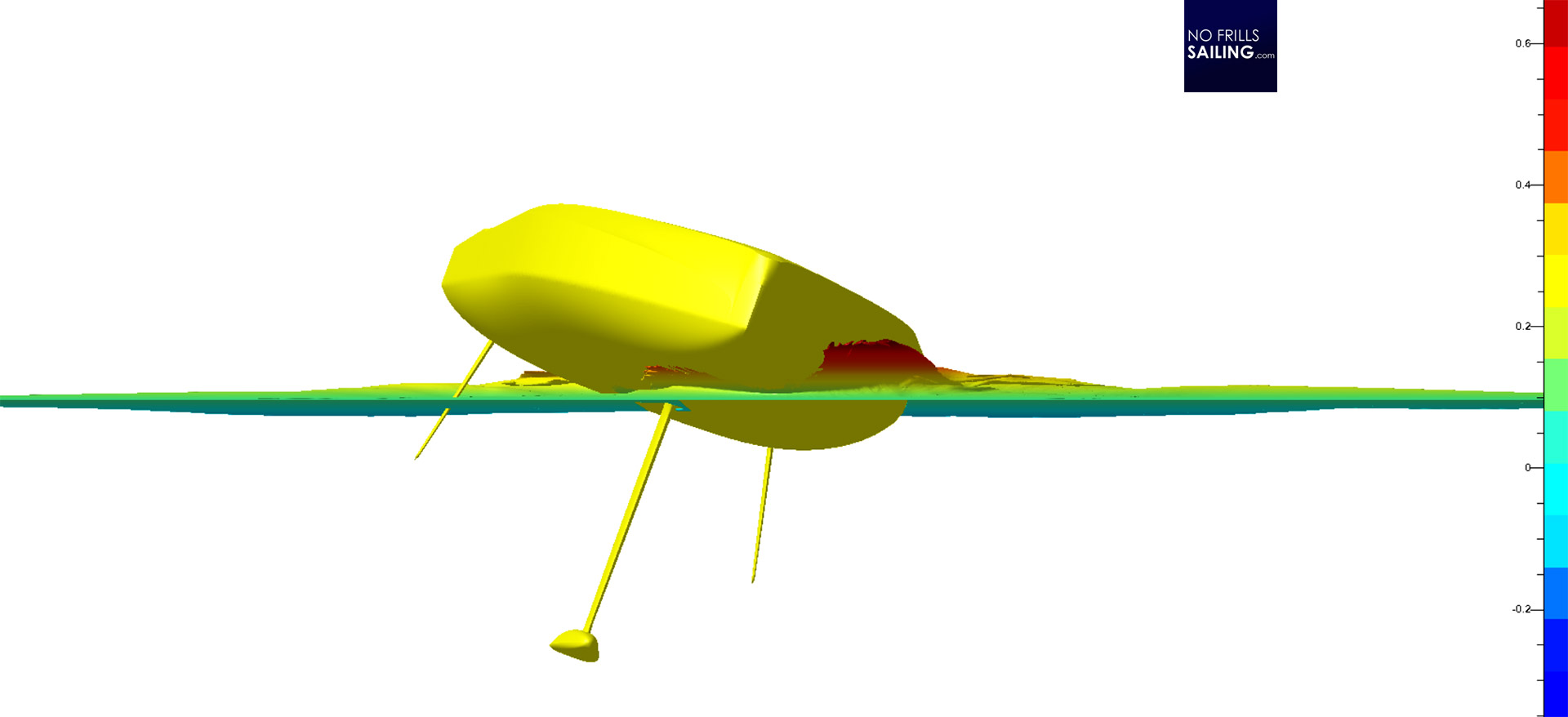
Pro as he is, I received an instant answer: “Of course, would love to!” Much more surprising than his prompt answer was the level of insight and information density he openly and freely started to share with me as normally – especially with ongoing projects – those infos are much more restricted. So, here we are: Let´s talk about this ominous new racing yacht in Merfyn´s facebook-title …
Talking to Merfyn Owen about DRAGON
Lars Reisberg | NO FRILLS SAILING.com: “Merfyn, mid of this year you posted this picture (above) in your facebook-account and hinted a new project: Could you please shortly introduce this new boat to us?”
Merfyn Owen | Owen Clarke Design: “Yes, of course, Lars: This is Owen Clarke’s sixth generation Class 40 , a scow. She will be the nineteenth of our designs built to the rule.”
NFS.com: “Can you disclose the client or customer who ordered this boat from Owen-Clarke-Design?”
Merfyn Owen: “The client is a return customer, Michael Hennessy who previously had #54 Dragon, one of our second-generation designs. Our new project, his boat, will be Class 400 designation number #200. So, the 200 th such boat measured to the Class 40 rule: The yacht is 12.19 meters length over all with an additional 2 meters bowsprit. Her maximum beam is 4.50 meters, draft restricted to 3 meters and a minimum class displacement of 4.580 kilograms plus 750 liters of water ballast each side. Her upwind sail area is of 115 square meters.”
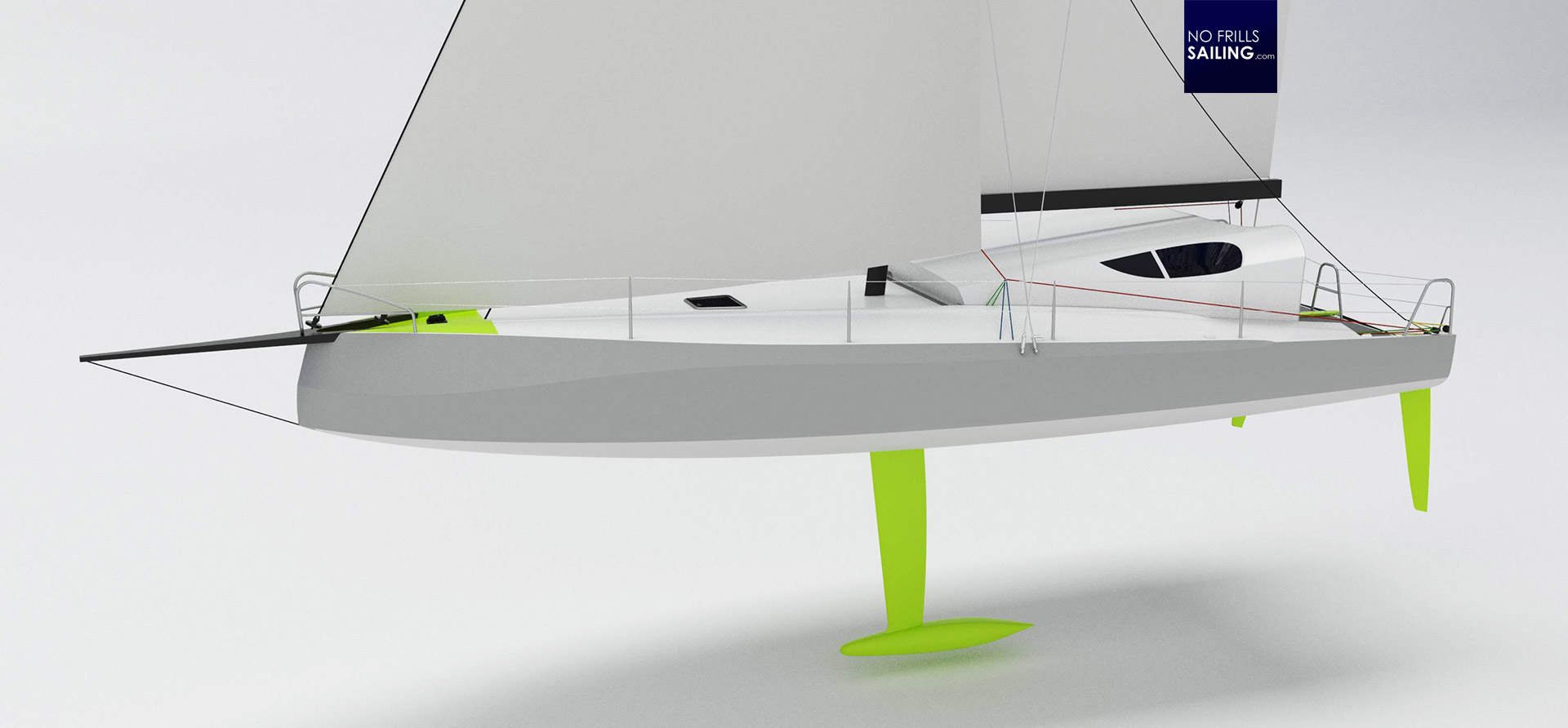
NFS.com: “For which races or highlight-races will this boat be principally built?”
Merfyn Owen: “A good question, Lars, because this is the first of our boats that has been designed specifically for the Route du Rhum. Historically, most of the French designs since around the year 2008 have been developed in a four-year design cycle aimed specifically at that race, the most important event in the Class 40 calendar for the French professional 40’ sailors and their sponsors. All Owen-Clarke clients on the other hand since our first 40’ design in 2004 have been Corinthian/amateur sailors and our boats have been developed to perform well in a wide range of conditions that are encountered in other events such as the Normandy Channel, Fastnet, Azores and Transat Jacques Vabres-races. In 2015 we also designed a masthead rigged Class 40 called LONGBOW #143, for another American client, specifically aimed at the North American circuit: The Newport-Bermuda, Bermuda 1-2 and Atlantic Cup.”
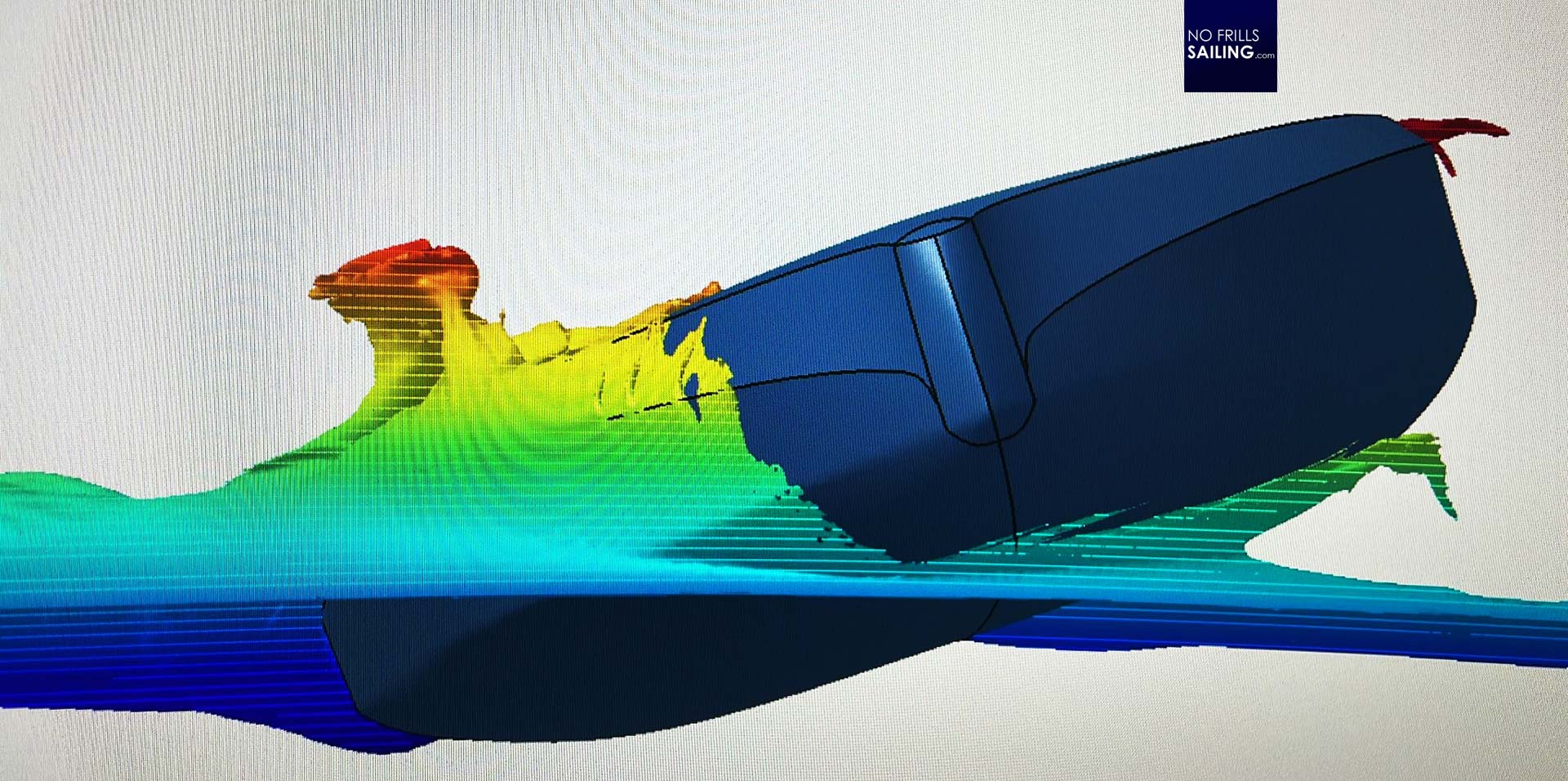
NFS.com: “So this indeed is a special boat! Are there any other designers or developers involved in this project?”
Merfyn Owen: “Yes, we had Peter Hobson on the team again, who worked on the LONGBOW project. His brief was primarily the lifting steering design, the cockpit layout and line handling systems. Since LONGBOW, Pete’s now on his third Vendee cycle as designer for Alex Thomson Racing. For the composite and keel engineering we worked once again with PURE, Team New Zealand’s IACC engineers. Integral to the design process has also been Illy Brummer at Axxon Masts and the owner’s sailmaker, Mark Washeim, and the team at One Sails.”
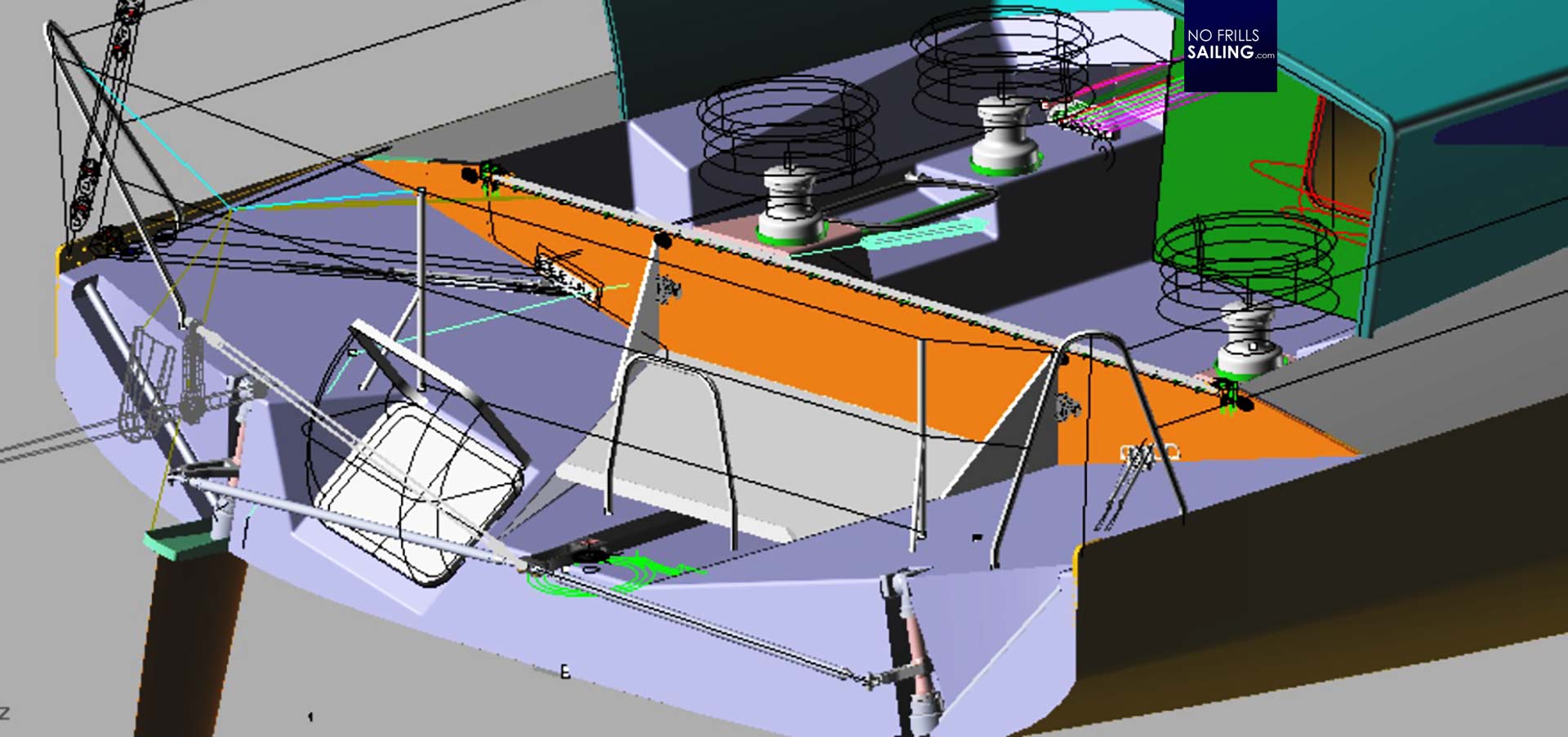
NFS.com: “What will this new boat be like? What are the main characteristics, what will she be very good at sailing conditions-wise? Are there any principal differences from current Class 40 designs?”
Merfyn Owen: “From the outside the most obvious difference between this and previous generation designs, as well as other racing boats is of course the scow bow. But this high-volume bow is the result of the hull design, not a feature that is then worked aft to develop the hull. This new design carries her maximum waterline beam and volume well forward of the mast. The result is a yacht that has 25 to 30 % more righting moment, or power, than a conventional Class 40. Another aspect of the rule is that it limits the water ballast volume to 750 liters on each side. If ballast was not limited, we would want to design in 1.250 to 1.500 liters of ballast for each side. So, we use weather modelling to optimize the position of the 750 liters in order to target the design for specific races and events. For this design, like on LONGBOW, we have three ballast tanks each side but they are further aft than previously, thus optimizing the boat for reaching rather than all-round polyvalent performance.”
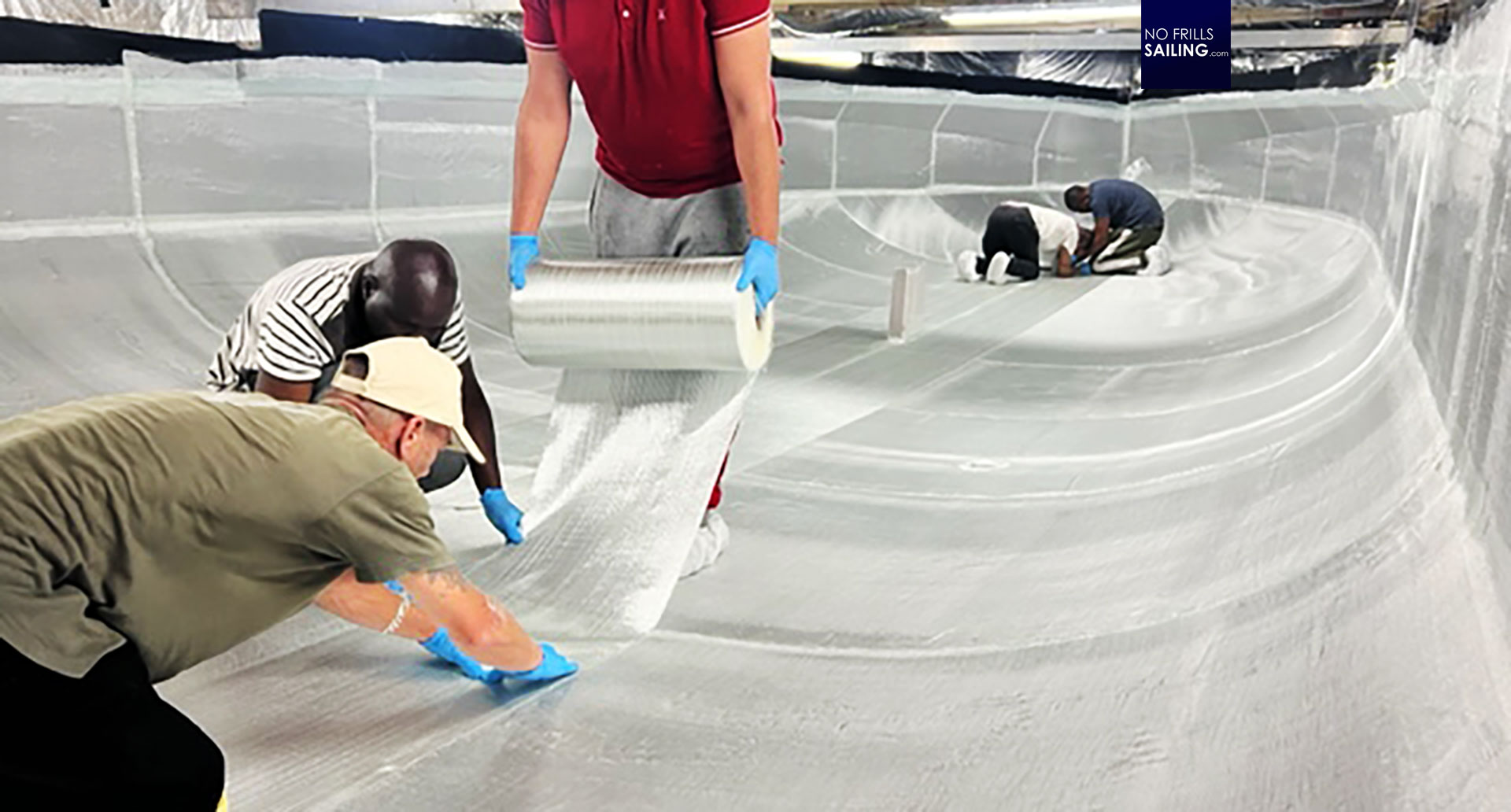
NFS.com: “I see. It seems that those limits of the box rule aren´t so limiting at all but more so initiating or catalyzing more innovation and experimenting. Are there any other details within the construction which you would describe as revolutionary or brand new?”
Merfyn Owen: “Well, the sheer power and speed of these boats means that they are very wet. Before construction began in South Africa, we built a mock up of the cockpit and coachroof in the UK. Over several days of design-meetings we sat Mike in it and worked through the ergonomics of working in it to make sure every detail was perfect. DRAGON has the highest level of cockpit protection of any of the current Class 40s with a large over-hanging coachroof which is covered in high-efficiency solar panels. These panels mean the yacht is not reliant on its diesel engine or hydro-generators for making electricity. The rudder is also a highly refined design, a machined high strength hard anodized aluminum alloy stock with a kick up system based on JP3 upper and lower bearings. Highly customised to save weight and improve survivability in case of impact. Last not least, as with IMOCA 60s, but unlike most of the current fleet of Class 40s, to save weight and improve efficiency the cockpit layout relies on several highly customized pieces of deck hardware rather than off-the shelf organisers and jammers.”
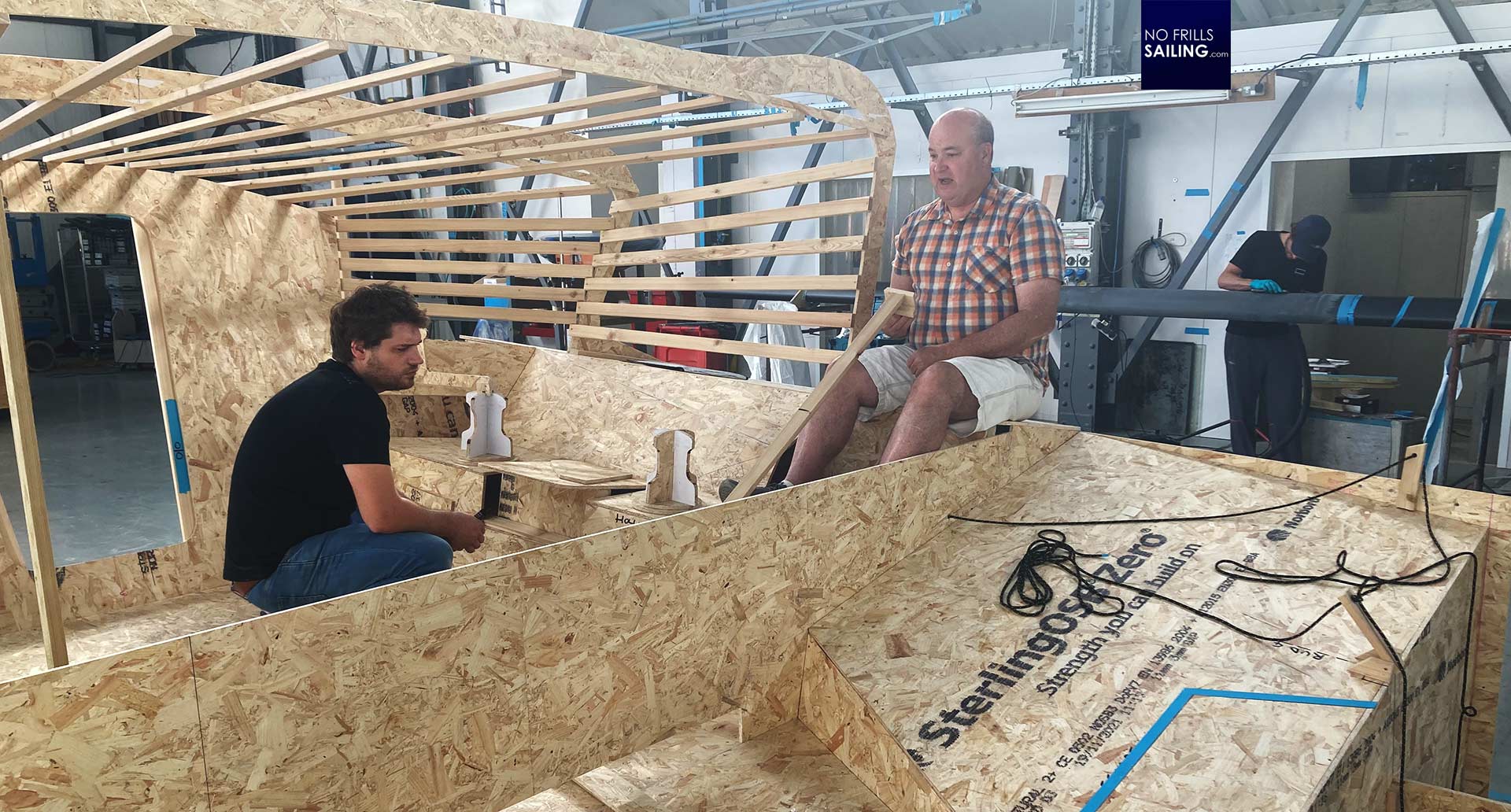
NFS.com: “… a lot of innovation, for sure.”
Merfyn Owen: “Yes, there are numerous small innovative details, parts of the interior and exterior that save weight and/or lower the center of gravity of the structure. This is especially important in a scow design, because the additional volume and righting moment comes at the expense of a significant increase in surface area of deck, hull and interior.”
NFS.com: “Merfyn, what is the timeline in building this boat? Who is building this boat?”
Merfyn Owen: “The project plan from the start was to build the composite components at Evolution Marine in South Africa, with a small group of specialist builders from overseas supporting the local team and acting as owner’s representatives during this phase. As we have done with two previous projects, the assembled composite structure would then be sent to V1D2 in Caen, where all the Class specialised fit-out, like steering, deck hardware, keel assembly and mast stepping would be undertaken. This means that the labor-intensive parts of the program, like mould building and composite construction, would take place in a country where the yard overhead is very competitive. The knowledge and experience in Class 40 and offshore racing that a French yard like V1D2 brings can then be used to complete the boat to a high specification, in this case before this year´s Transat Jacques Vabres. Late delivery of the composite hull and deck meant that the plan changed because it was obvious the boat could not be made ready in time to qualify for the TJV and so she was shipped to Maine Yacht Centre for final fit-out.”
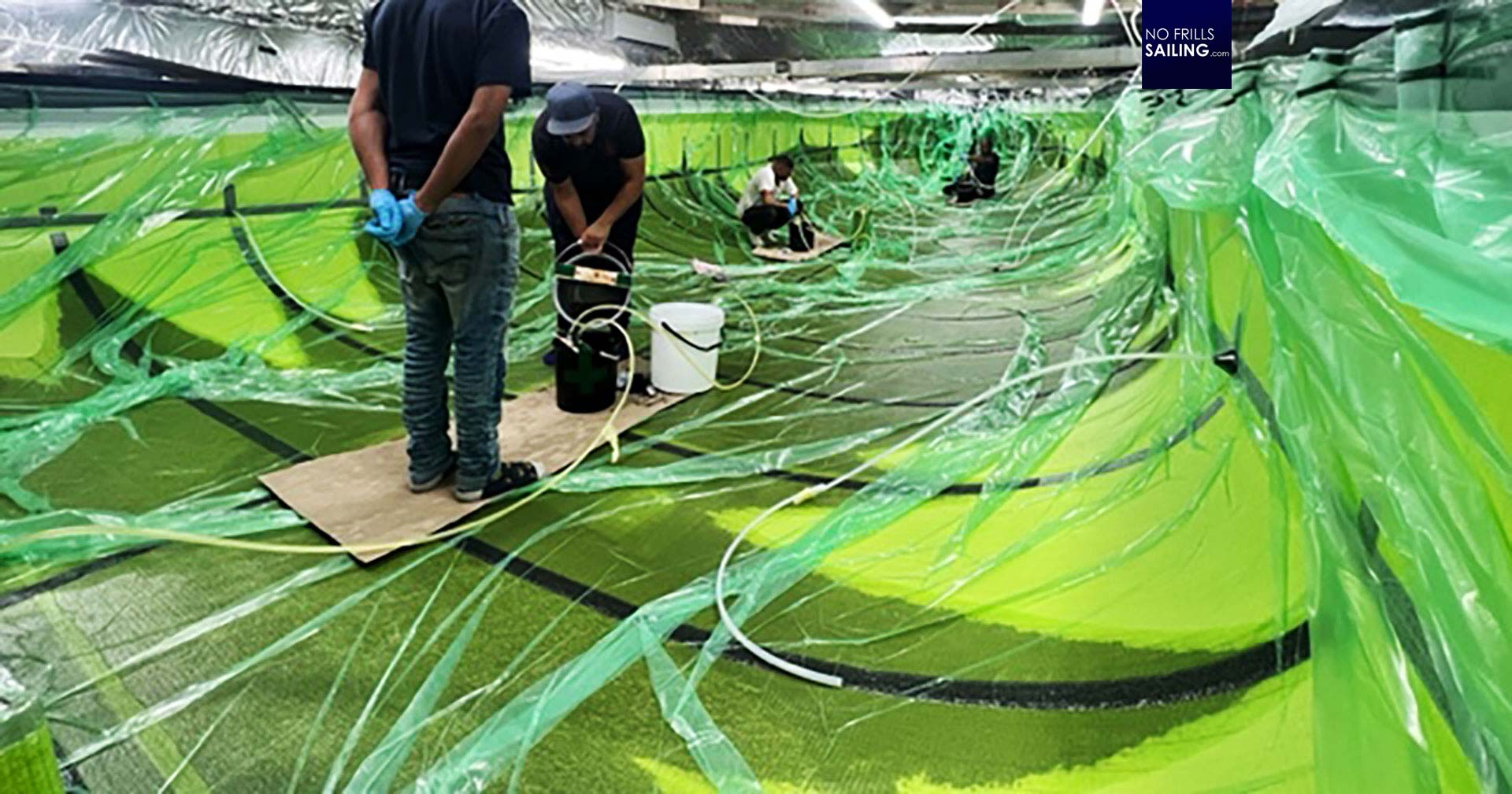
NFS.com: “I personally find it so interesting to see that building a yacht for such a use-case is much more complicated and involves many more people and milestones …”
Merfyn Owen: “Oh yes. And it is even more interesting: Main Yacht Centre for example is run by Brian Harris, also a very experienced IMOCA 60 and Class 40 preparateur and owner himself who recently completed a round the world race on his own Class 40. He used to be the North American agent for Akilaria and undertook similar fit-out work on a number of Akilaria first, second and third generation designs. The fit out at MYC is being managed for the owner by Kyle Hubley, a professional sailor who was part of the build team in South Africa and is himself a former Class 40 owner. Regarding the timing, as launch from the Maine yard is likely to coincide with the cold weather on the east coast it is unsure when the boat will be moved to Charleston SC, where Mike has traditionally operated from in the Winter. We are unsure at this point if the first event will the RORC Caribbean 600 or the 2024 Atlantic Cup. Currently the plan is to take part in the fully crewed Quebec-St. Malo Race and then undertake some racing in Europe.”

NFS.com: “Which will be absolutely exciting for DRAGON´s owner, I am sure! I can imagine that building such a yacht is connected to a lot of challenges to overcome. Could you give some more insight into high-end racing boat building process?”
Merfyn Owen: “Well, as the Class 40 rule has a minimum weight that a boat must hit to be competitive and because of the very large surface area of a scow design achieving this target is much harder and involves designing a more complex structure than previously. On this Class 40 the internal supporting structure aft of the mast is based on a system of longitudinals. But unlike our 60s, forward of the mast this changes to athwartship frames, seven of them in total. This and other details have put more pressure on the yards building these boats in terms of the skill level required and the attention to detail in areas such as resin/fibre content for both secondary bonding and the hull/deck/parts infusion process. You see, if these ratios get out of control, then for the same number of parts, significant weight can be added to the yacht and unless there is monitoring during the build this will come as something of an unpleasant surprise during the measurement process.”
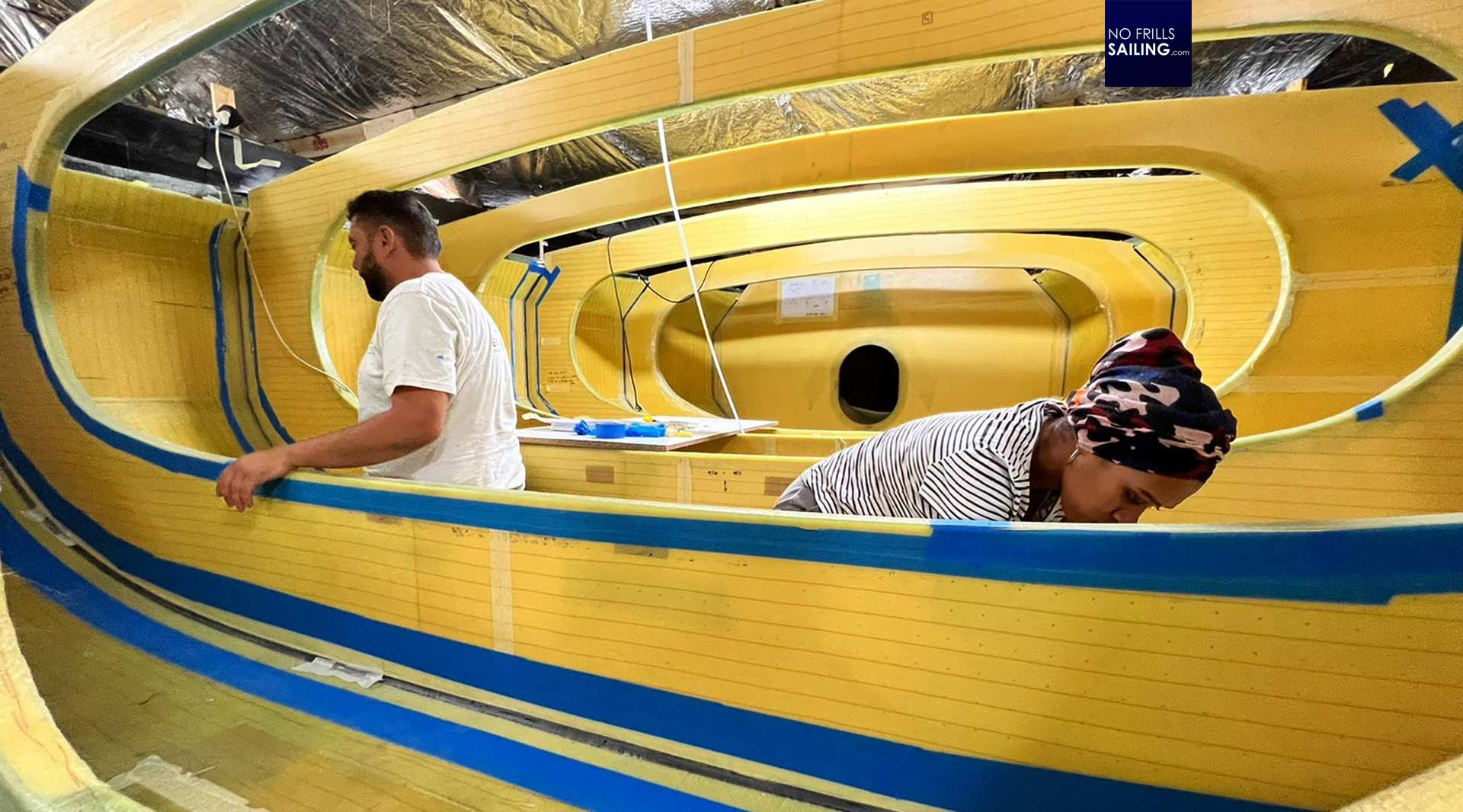
NFS.com: “Which explains the high budgets needed in racing …”
Merfyn Owen: “Yes, and obviously one of the challenges of building a long distance away from the designer’s and/or owner’s base is ensuring that was is designed is built, and to the right quality. OC have a good deal of experience in managing this aspect of such a project, going back to the time when we oversaw the build of Ellen MacArthur’s KINGFISHER in New Zealand, and before that Team Group 4 in France. Both times this involved the client having their own people on site full time and this is how the project at Evolution was also planned. In addition to a physical presence, real-time data was also commissioned to monitor quality during the build. The hull plug was laser scanned prior to mould production, test panels were made prior to infusion and NDT/ultrasound testing of the hull, deck, and assembled parts was undertaken once completed. The result of all these efforts is that the completed composite structure, when checked on two separate loadcells, is 80 kilograms below the required mass on boat #1, a significant achievement! This is not to say the build was without its challenges, few ever are. During IMOCA 60 builds I have personally required the scrapping of components, bulkheads, and a keel on a previous occasion. During this build one of the reasons the composite assembly was late is that more core had to be shipped and a second complete deck built, when the inside skin, the last infusion process was less than perfect the first time around.”
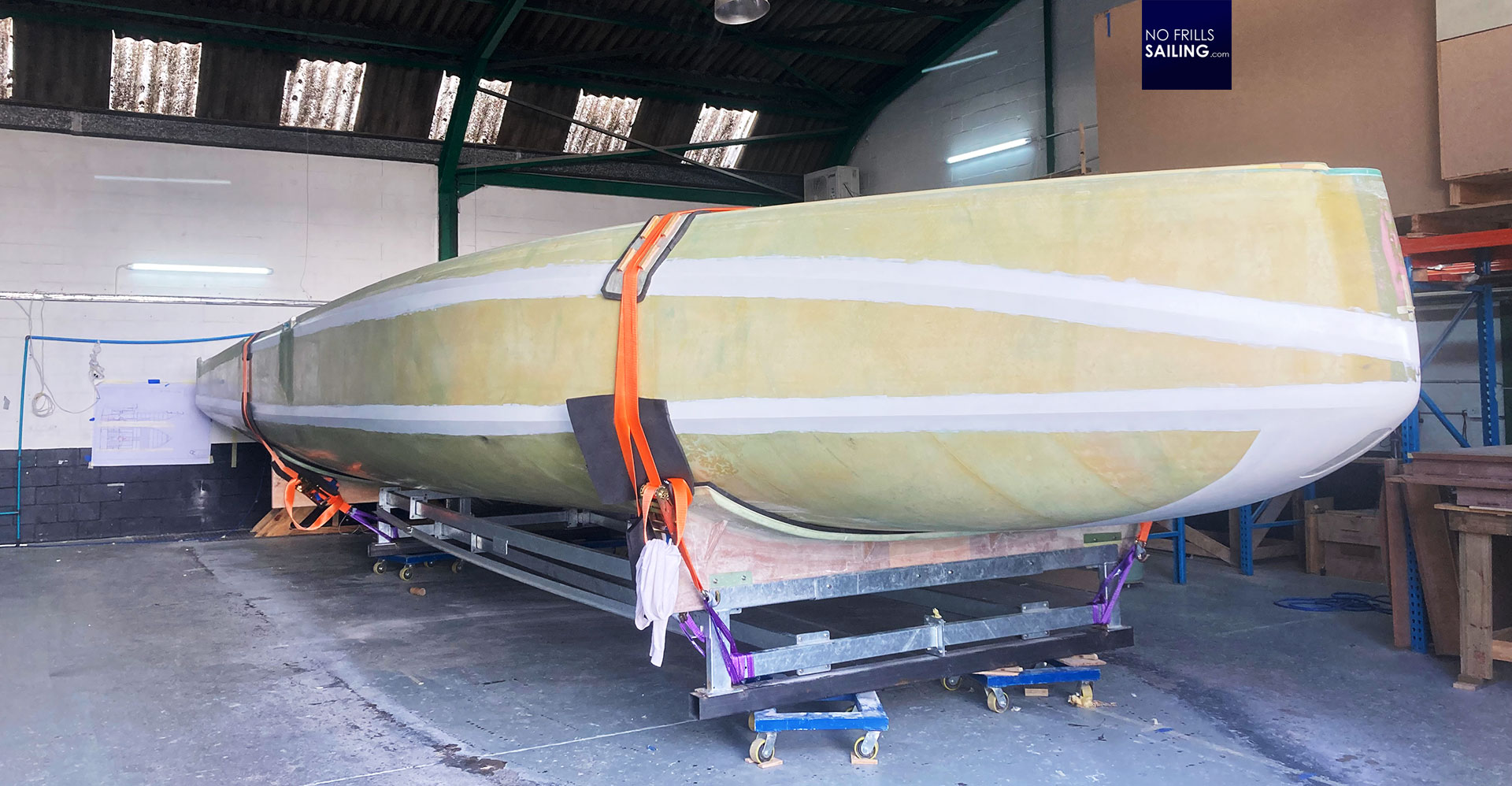
NFS.com: “This is absolutely incredible, Merfyn! So different from what I get to see on a daily basis and certainly many levels up. But what I find most exciting is the level of determination and passion that everyone displays, making such a project become reality!”
Merfyn Owen: “Absolutely, Lars! Let me finish on a positive note: While not the easiest or simplest project, along with LONGBOW, this Class 40 #200 is without doubt the most innovative and, shall I say “tidy” Class 40 build we have been involved with to date!”
Thanks so much, Merfyn, for this exclusive insight into the making of your latest project DRAGON. I will certainly check on the performance of this boat and hope to see her in real life soon when I happen to be roaming the hotspots of racing in France in the future!
More Class 40-related articles may be browsed here:
Merfyn Owen, Britton Ward and the legendary Marc Lombard on Class 40 designs
Visiting the all-new Pogo 40 S4
Meeting Henrik Maswkowitz aboard his Akilaria RC2
Dragon Flite 95 Class
The Dragon Flite 95 is the Radio Controlled yacht of the future…
Every aspect of the DF95 has been developed with the very latest radio sailing design concepts, construction and components for a superb radio sailing experience.
Everything needed to go sailing is included in the complete kit, including sails, delivered in a box, so all you need is to assemble, add batteries and go sailing.
This page provides the Class Rules, Tuning Guides, Tips and Racing Rule explanations and strategies.
DF95 Tuning Guide
Click on link for the Tuning Guide for Dragon Flite 95
Dragon Flite 95 Class Rules
Click on above link to read the latest Class rules
Club Commencement Certifcate COVID-19
Click above to see our compliance certificate
Helpful Tips
Craig richard’s df95 tuning guide:.
Page-1 https://www.nigelbarrow.co.uk/craigs-setup-guide
Page-2 https://www.nigelbarrow.co.uk/copy-of-my-story
This is the link to the Ken Read Clinic discussions on DF95 Settings
https://www.youtube.com/watch?v=hz90sBK8Jn0
Advice on Batteries
For those skippers who choose to use 4xAA Rechargeable NiMH batteries in the boat, they will only charge to 1.2v per cell, so 4x1.2 = 4.8v max and discharges to lower voltage with use, and sometimes will affect your Range because of this. Also, your Rudder or Sail winch may begin to operate with a jitter when at minimum level. So many have upgraded to the LiFe 6.6v 850 mAh battery which maintains voltage all day, giving consistent range and operation.
Also 4xAA NiMH Batteries weigh approx. 90 to 100 grams, and the Life battery is approx. 56 grams and as low as 47 grams, where DF rules specify minimum battery weight is 45 grams.
United Way hosts 9th annual Dragon Boat Race

Much cooler Sunday, 40s possible by Monday morning

20-25° colder Sunday

Over 500 people take part in Pink Hearts Fund Walk & 5K

BP Oil Spill: Where does the coast stand 14 years later?

Aaron's Saturday First Alert Forecast

Warm and humid Saturday with a few storms possible, cooler Sunday

United Way hosts 9th annual Dragon Boat Race
BILOXI, Miss. (WLOX) - On Saturday, teams hit the water for a unique race that will raise money to help the community.
After months of planning and days of practicing, United Way’s 9th annual Dragon Boat Race paddled through Bayou Bernard. The fundraiser was filled with t-shirt and tent contests along with food trucks and fun.
United Way CEO Cathy Springer says $40-50 thousand is raised from this event alone.
“Our community impact grant process opens in January and everything we raise here will go into that grant pool,” she explains. “In the last grant cycle, we actually awarded $430,000 to 13 local nonprofits. The money stays local, and that’s an important point to make. 99¢ out of every dollar stays in Harrison, Hancock, Pearl River and Stone County.”
21 teams paddled across the water with hopes of having the fastest time to the finish line. Teams such as Mississippi Power even strategize before the contest.
“[Our] strategy is that we’re not in competition with anybody out here,” says Mississippi Power’s Justin Tanner. “We’re trying to beat ourselves. We’re the best here. We’re just trying to, every time we come out here and get on the boat, be better when we come off the water — every time.”
However, the event is about more than winners and losers.
“All of the families that are going to be helped, all of the organizations that are going to be helped, and we get to have fun while doing it? It’s a win-win,” says Tanner.
First timers Hollywood Casino Gulf Coast and Boomtown Biloxi say when it comes to competition, if you stay ready, you don’t have to get ready.
“Yes, indeed, and we’re ready,” says Niyokia Lee with the casino. “We’re geared up. We’re on fire to make this thing happen, because it’s all about building relationships overall and edifying all of the businesses here on the Mississippi Gulf Coast. So, we’re all one unit supporting each other for a great cause.”
“We thought this would be a fun and exciting way to support the United Way in our community,” explains VP and General Manager Barry Regula. “Both Boomtown and Hollywood are very active and supporting civic events and charities in the area, and this is a way to give back to the United Way and also give back to our great team members.”
Springer says planning for the 2025 Dragon Boat Race & Fundraiser starts as early as Monday morning.
See a spelling or grammar error in this story? Report it to our team HERE .
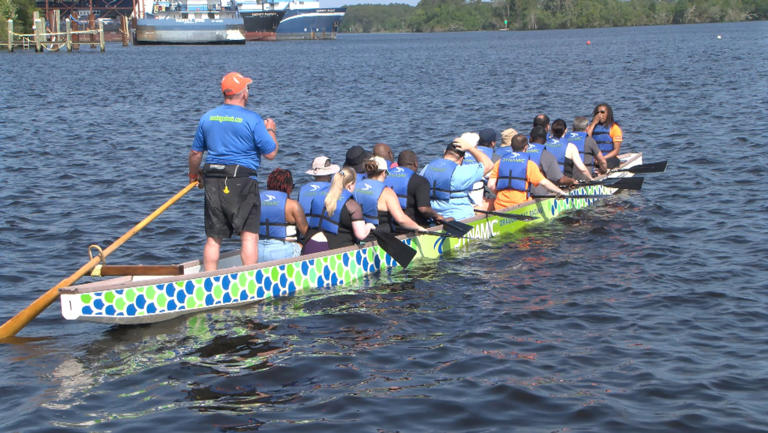
Class Rules and Plans
International dragon class rules, plans and measurements, privacy overview.

IMAGES
VIDEO
COMMENTS
The Dragon class remains one of the few top level racing classes where sailing skills still predominate over crew weight and fitness. These are just some of the reasons why yachtsmen of every age and every standard are attracted to the Dragon. ... The International Dragon, A truly thoroughbred racing yacht. Registered Boats The Dragon Class is ...
The Dragon. The Dragon is the pre-eminent one design keelboat in the world. There are Class Associations in 31 countries across the globe and more than 1,300 boats registered as actively sailing. Sailors range from Olympic medallists to enthusiastic club sailors, and aged from 8 to 85, but all find that in different ways the Dragon provides a ...
But not the Dragon. Designed in 1929 by Norwegian Johan Anker, the Dragon was made an Olympic class in 1948 and remained one until 1972, since when the elegant and distinctive keelboat has ...
One Design Providing boat on boat close quarter racing where the result does not depend on boat design or weather conditions. Crewed by only 3 or 4 The weight-limited crew are all involved all the time. A Dynamic Class The most successful and enduring keel boat class, sailed in 30 countries, with 30+ new boats built each year.
Dragon racing in 2008. Wooden dragon, built by Abeking & Rasmussen (1954) on the Großer Brombachsee Magic Dragon used as a bar in Britannia Yacht Club's Dragon pub A wooden Dragon on its trailer, showing the keel shape and rudder arrangement. The Dragon is a one-design keelboat designed by Norwegian Johan Anker in 1929. In 1948 the Dragon became an Olympic Class, a status it retained until ...
LATEST NEWS. Commodore's Cup in Cannes….. South Caernarvonshire Yacht Club to host British Dragon Edinburgh Cup
The Dragon was the Olympic one-design three-person keelboat class from 1948 to 1972, which saw upgrades for racing with the addition of a genoa and spinnaker, with supporting rigging changes. In 1961 the IDA was formed to formally manage the evolution and consistency of the boat. This era ushered in the biggest expansion of the Dragon Class ...
The Dragon Class Sailboat is one of the most elegant and prestigious keelboats in the world, with a rich history and a loyal community of sailors. Learn more about this classic design, its features, events and rankings at the official website of World Sailing.
A boat with a BN of 1.6 or greater is a boat that will be reefed often in offshore cruising. Derek Harvey, "Multihulls for Cruising and Racing", International Marine, Camden, Maine, 1991, states that a BN of 1 is generally accepted as the dividing line between so-called slow and fast multihulls. BN = SA^0.5/(Disp. in pounds)^.333
Explore the Dragon Class Builders. Over 300 boatbuilders have tried their hand at the Dragon, principally in its earlier, wooden, days. Some only built one Dragon but several built 100s and many built dozens. The class owes a particular debt to Borge Børresen, who managed the construction transition from wood to GRP immaculately so that both ...
The Boat - Technically demanding, Classic lines, Modern spars and rigging The People - Raced by a range of ages and genders - crew of 3 or 4 within weight limits, Great social events The Class - Active in 30 countries, 5 continents, with 1420 registered boats, Racing at local, national and world levels, Classic and Corinthian trophies ...
There are some which are restricted to them and others where Classics are likely to form a significant part of the entry. In the UK, the BDA Classic Championship will be at Aldeburgh Yacht Club on…. The British Dragon Association is the home of the stunningly beautiful UK International Dragon class. World-class one design keelboat racing.
Spars and sails are easily adjustable while racing, allowing a skilled crew to optimize the boat for any conditions. Dragon races cannot be won by brute strength. The Dragon's design philosophy has made it a class where extremely close racing is the norm, and where races are won by the crew's mastery of the conditions and tactics on the course.
Posted on 1 Feb International Dragon Class Prince Philip Cup day 3 Sailors were keen to get on the water after the cancelled day After a lay over day followed by a cancelled race day, sailors were keen to get on the water on day three of the International Dragon class Prince Philip Cup/Australasian Championship 2024, hosted by Metung Yacht Club.
Wind had played havoc with the regatta at Metung Yacht Club With five races completed and a series guaranteed, all 17 yachts entered in the International Dragon class Prince Philip Cup/Australasian Championship 2024 took to the water at Metung on Sunday, January 28, 2024. It was the final day of competition.
The "Modern Era" of International Dragon Boat racing started in 1976 in Hong Kong and the International Dragon Boat Federation (IDBF) was founded in 1991. There are over 300,000 participants in Europe, from the UK to Ukraine, and 90,000 in the USA and Canada, not forgetting the nearly 50 million in China. ... The International Dragon Class ...
The Prince Philip Cup/Australasian Championship 2024 is being contested by a fleet of 17 International Dragon class yachts at Metung, on the Gippsland Lakes, in Victoria, Australia. Day two racing dawned with a light wind after an overnight storm, but a forecast of strongly building winds. There were two races planned for the Dragons today.
Dragon Class Yachts racing Download Inquiries. Corporate Communications, Yanmar [email protected]. Note: Information contained in the news release is valid at the time of publication and may differ from the most recently available information. Archive. 2024 (1) 2023 (64) 2022 (51) 2021 (8) 2020 (19) 2019 (25) 2018 (15) ...
In Hong Kong Dragons race or sail every weekend of the year. Based currently at the Royal Hong Kong Yacht Club base at Port Shelter "Shelter Cove", our normal racing season lasts from September to May but we continue to race during the summer months. Most of the races take place on Saturday afternoon and Sunday (all day).
The Dragon class boat has recently undergone an exacting refit. Rupert Holmes reports. ... Bluebottle, the Duke of Edinburgh's boat, is racing again for the first time in 60 years.
DRAGON in the making. Merfyn Owen is one of the renown naval architects and their racing yacht designs are competing against the who-is-who of the regatta scene. When he recently posted a new facebook title picture I was intrigued: New racing boat designs especially those of the more restricted box-rule classes are of utter interest for me, so ...
The Dragon Flite 95 is the Radio Controlled yacht of the future…. Every aspect of the DF95 has been developed with the very latest radio sailing design concepts, construction and components for a superb radio sailing experience. Everything needed to go sailing is included in the complete kit, including sails, delivered in a box, so all you ...
The Dragon Boat Race is a traditional event that celebrates teamwork, determination, and community spirit. Teams of paddlers compete in vibrant dragon boats, racing against each other to the beat ...
United Way hosts 9th annual Dragon Boat Race. Updated: Apr. 19, 2024 at 8:00 PM PDT. On Saturday, teams hit the water for a unique race that will raise money to help the community. Forecast.
BILOXI, Miss. (WLOX) - On Saturday, teams hit the water for a unique race that will raise money to help the community. After months of planning and days of practicing, United Way's 9th annual ...
International Dragon Class Rules. DRA Class Rules 2024. DRA Class Rules Changes 2024. Rules for Classic Dragons. Technical Committee Rulings.